
“You could believe her as a princess.”
—WILLIAM WYLER, DIRECTOR OF ROMAN HOLIDAY (1953)
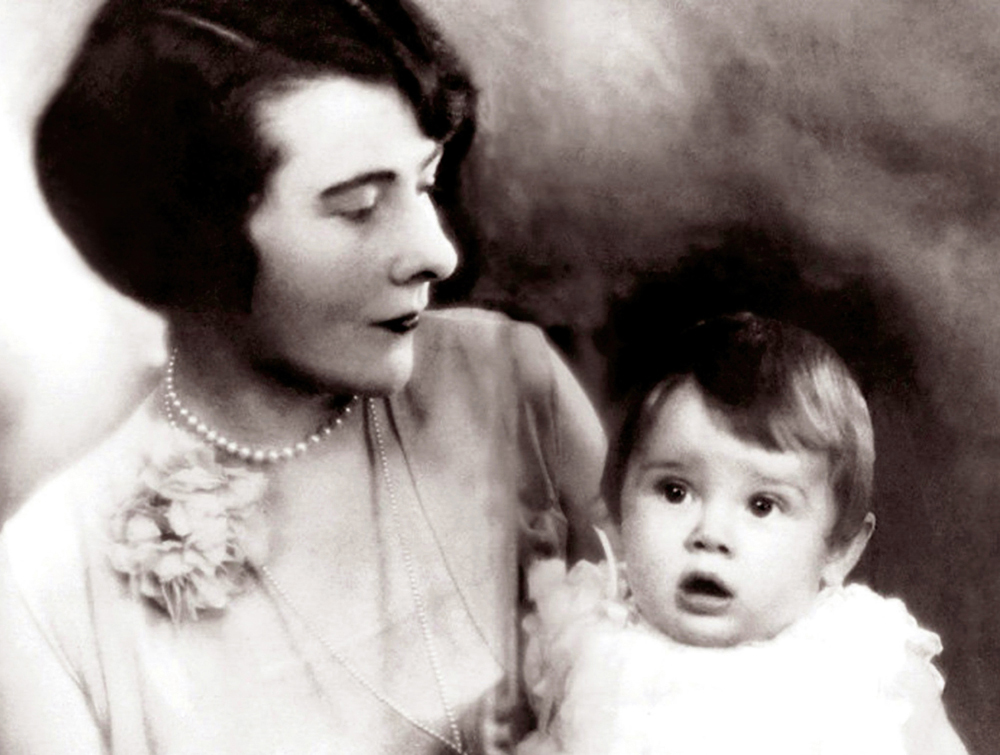
“I can really take no credit for any talent that Audrey may have. If it’s real talent, it’s God-given. I might as well as be proud of a blue sky or the paintings in the Flemish exhibition at the Royal Academy.”
—BARONESS VON HEEMSTRA, ON THE SUCCESS OF HER DAUGHTER

“My mother always used to say, ‘Good things aren’t supposed to just fall in your lap. God is very generous, but he expects you to do your part first.’ So you have to make that effort. But at the end of a bad time or a huge effort, I’ve always had—how shall I say it?—the prize at the end.”
—AUDREY HEPBURN
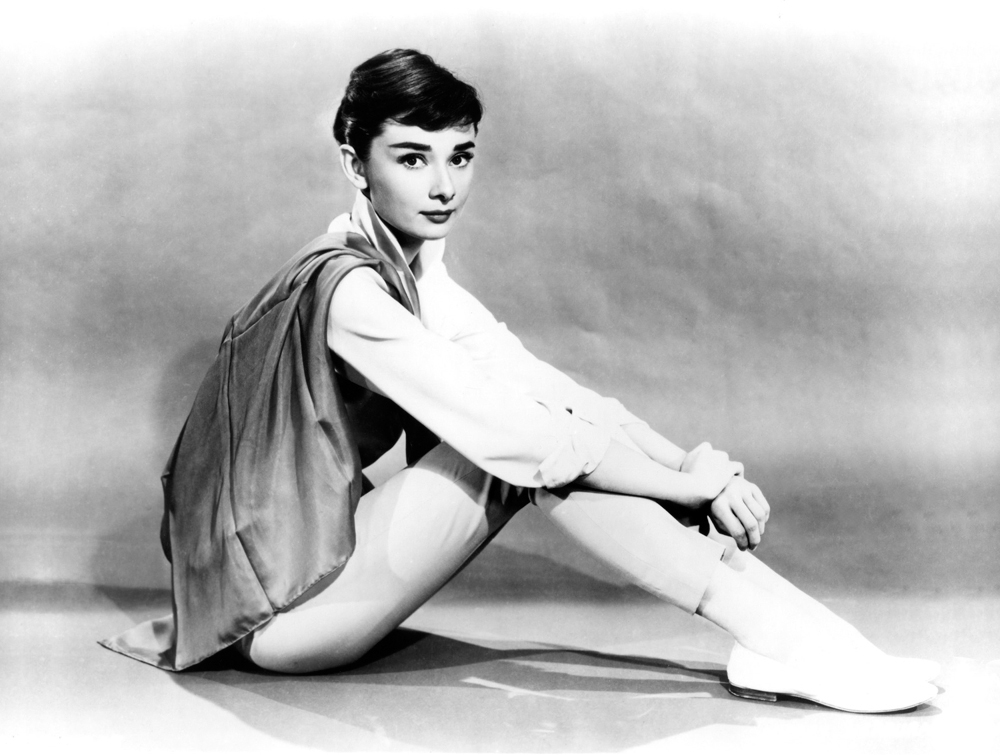
During World War II, Audrey danced in secret performances to raise money for the Dutch Resistance. She eventually had to stop dancing, though, because of malnourishment caused by a diet of mostly endive and tulip bulbs.
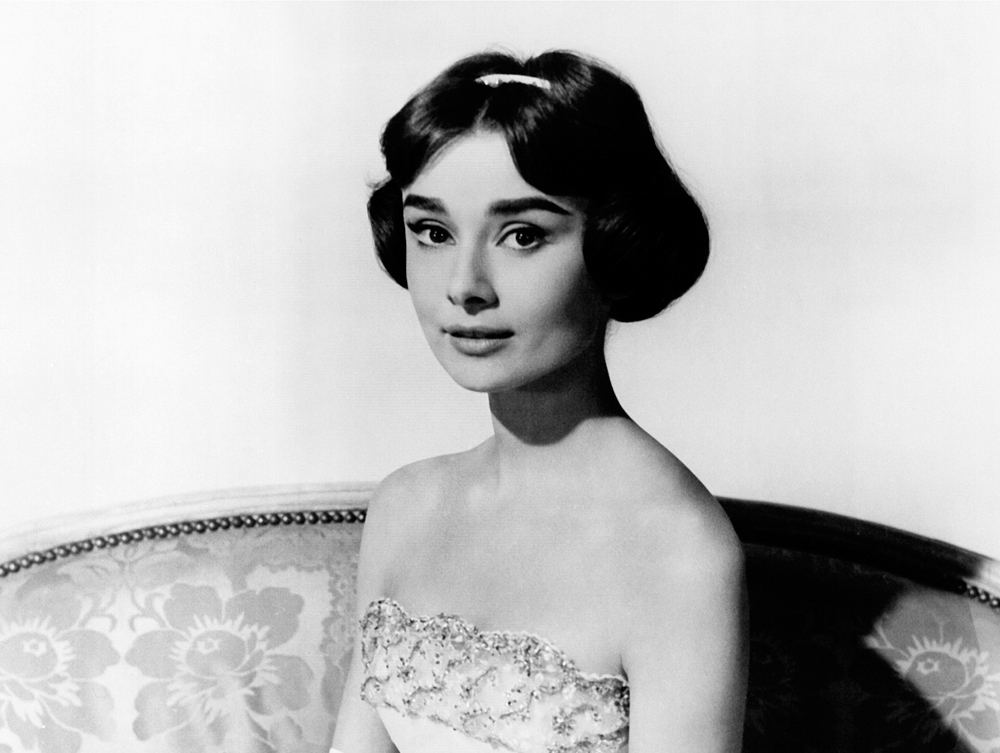
“This girl, single-handedly, may make bosoms a thing of the past.”
—DIRECTOR BILLY WILDER
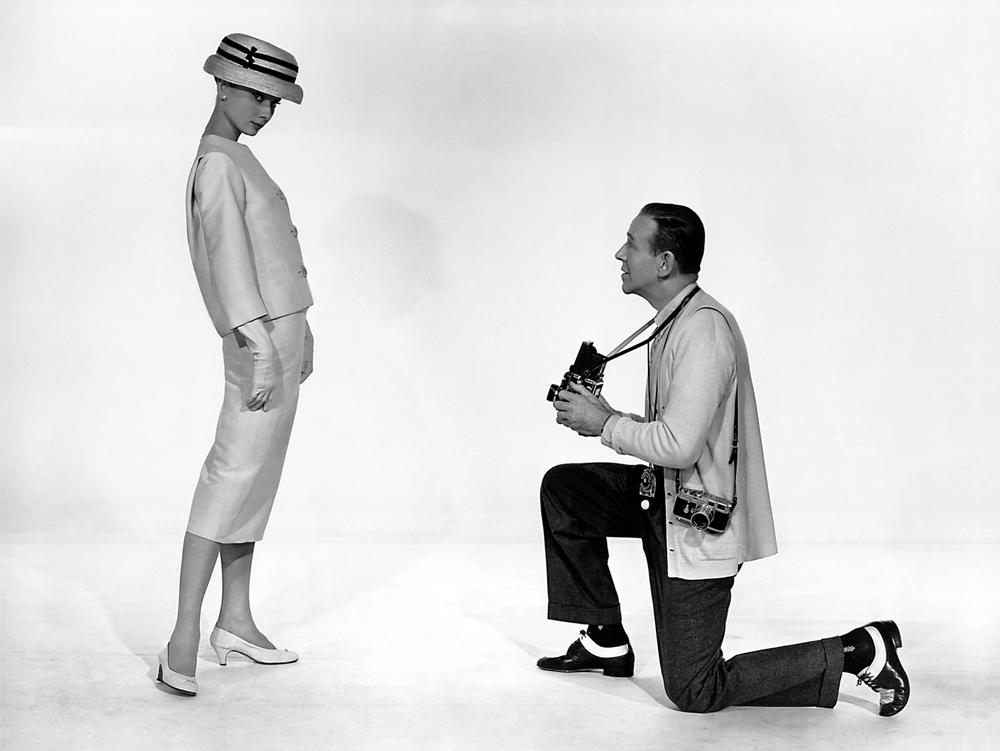
Offered the lead in the movie Gigi (1958), Hepburn turned it down to star in Funny Face (1957) instead. Thrilled that she would be putting all those years of dance training to good use, she asked for—and got—famed hoofer Fred Astaire.
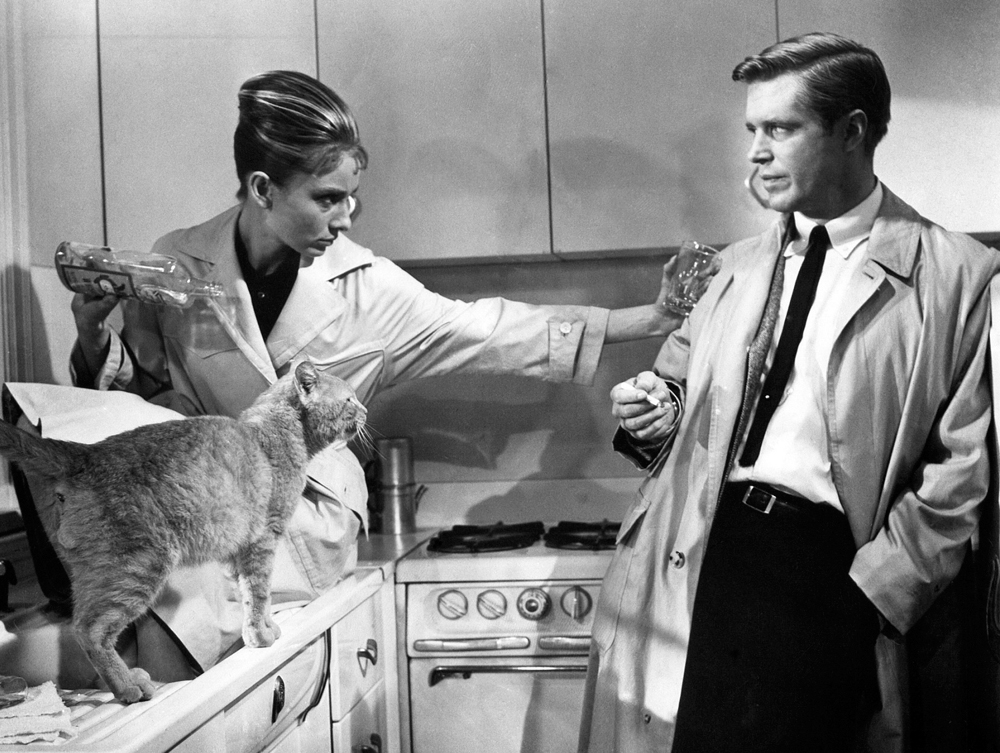
“Nothing really happened in the book. All we had was this glorious girl—a perfect part for Audrey Hepburn. What we had to do was devise a story, get a central romantic relationship, and make the hero a red-blooded heterosexual.”
—GEORGE AXELROD, WHO ADAPTED TRUMAN CAPOTE’S BREAKFAST AT TIFFANY’S (1961) FOR THE SCREEN

“I love Albie! Oh, I really do. He’s so terribly, terribly funny. He makes me laugh like no one else can.”
—AUDREY, ABOUT ALBERT FINNEY, HER COSTAR IN TWO FOR THE ROAD (1967)
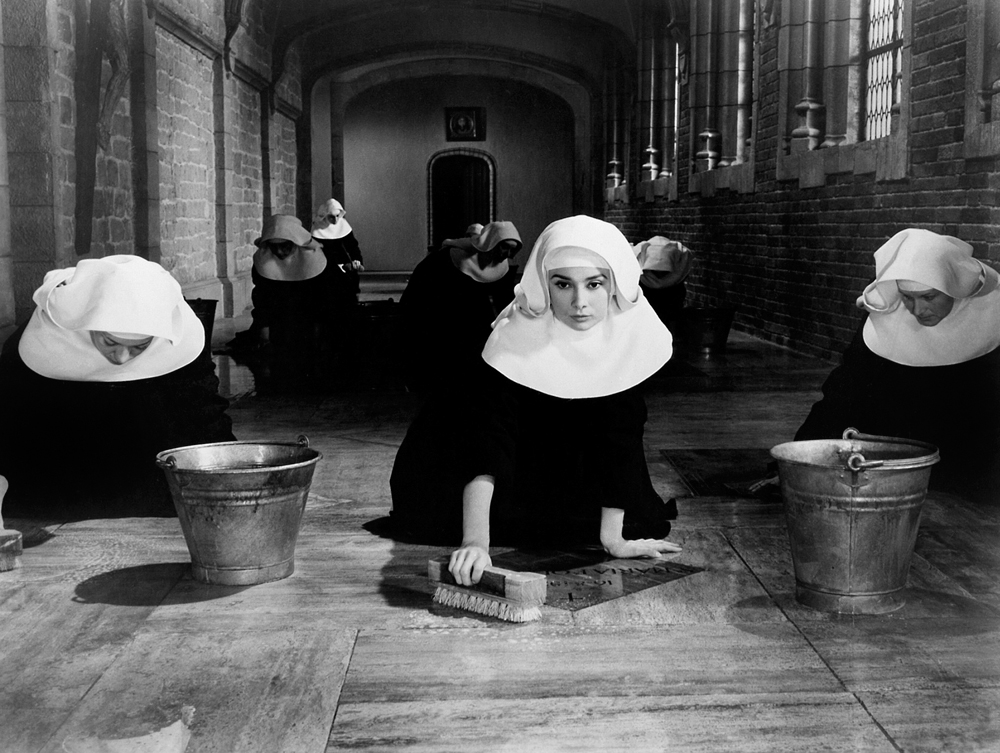
“I wish there were a half a dozen women like her …”
—FRED ZINNEMANN, DIRECTOR OF THE NUN’S STORY (1959)

To simulate blindness for her role in Wait until Dark (1967), Audrey wore vision-blocking contact lenses.
She also learned to read Braille.
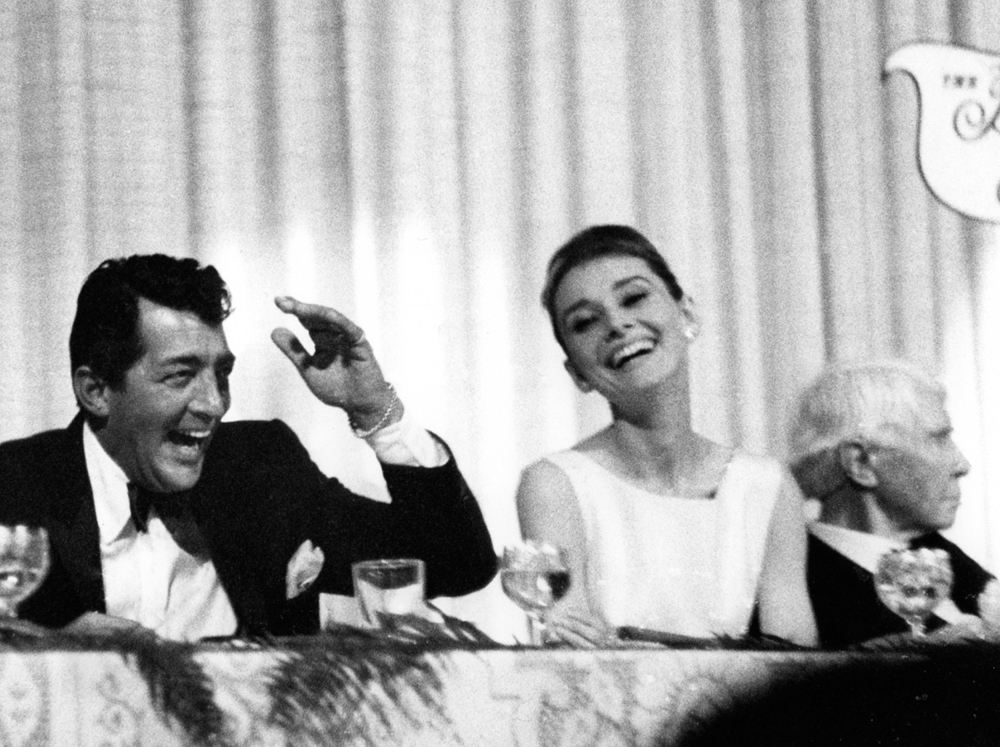
Dean Martin, Audrey, and poet Carl Sandburg make an unlikely trio at a Friars Club banquet at the Beverly Hills Hotel in the 1960s. In the 1954 Jerry Lewis & Dean Martin comedy Living It Up, Martin did a scene in which he sang a love song to a picture of Hepburn.

“One thing is certain. Audrey Hepburn is Natasha.”
—KING VIDOR, DIRECTOR OF WAR AND PEACE (1956)
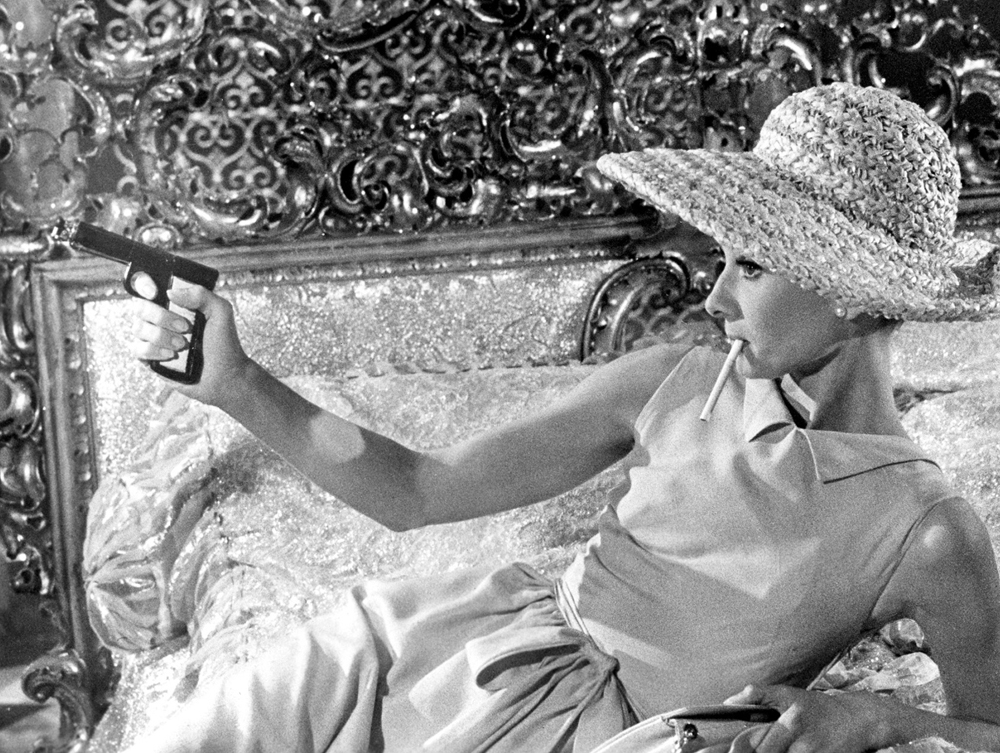
Paris When It Sizzles (1964), which reunited Audrey with former flame William Holden, was a remake of the 1952 French film La Fête à Henriette (Holiday for Henrietta). The film did not do well. Judith Crist of the New York Herald Tribune dubbed it “Hollywood—when it fizzles.”
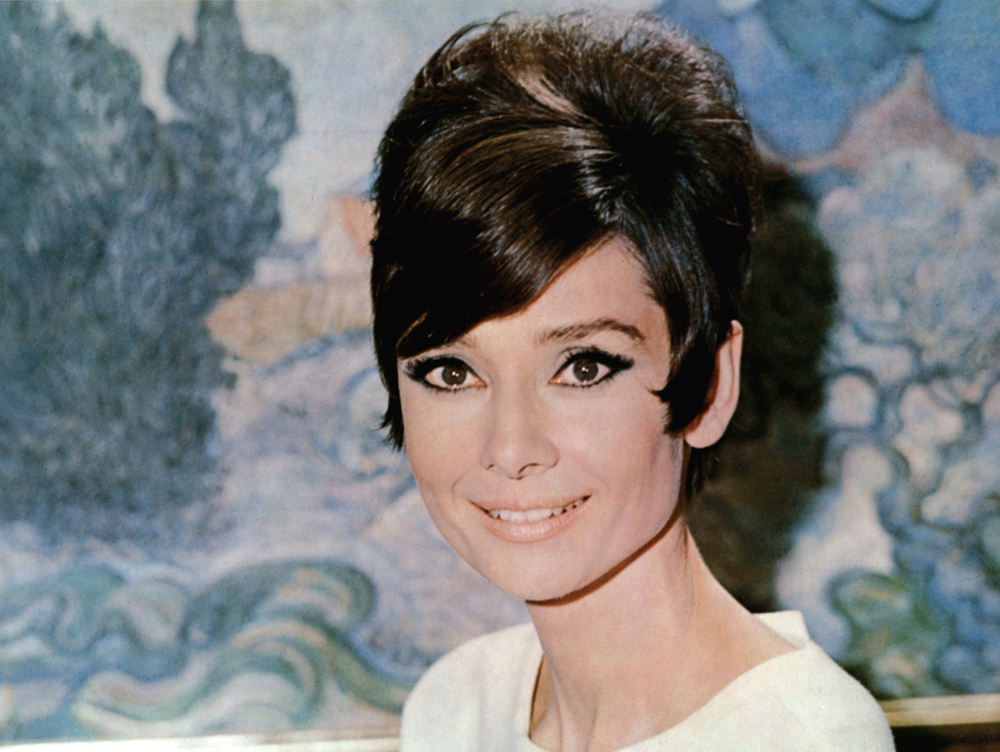
“Acting doesn’t come easy to me. I put a tremendous amount of effort into every morsel that comes out.”
—AUDREY HEPBURN, 1951
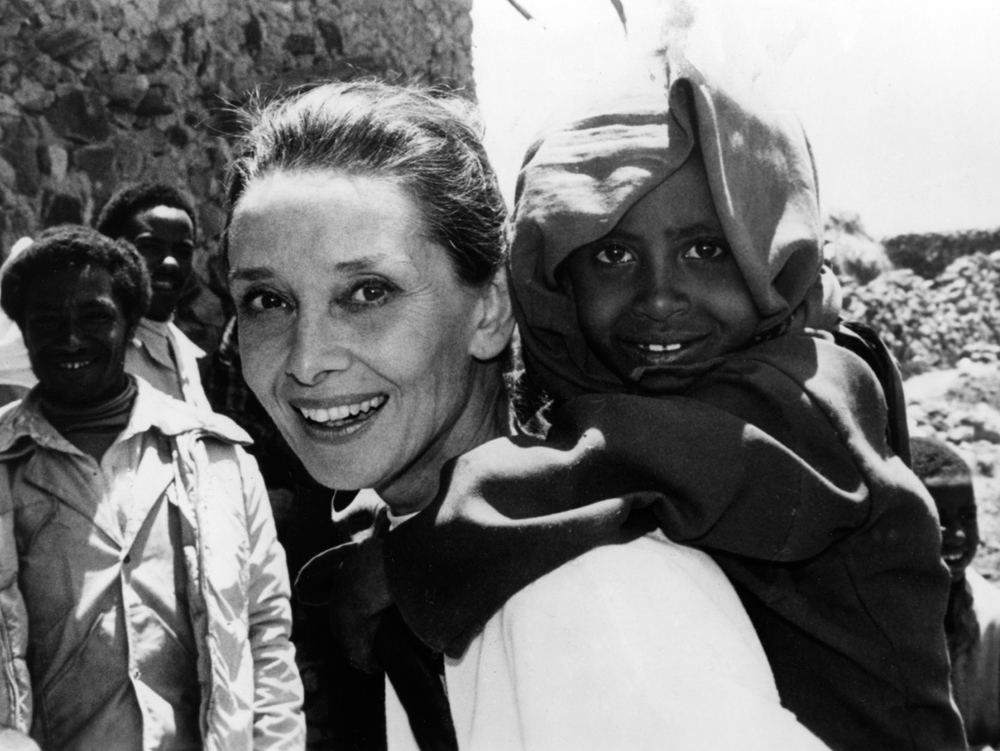
UNICEF appointed Audrey their Goodwill Ambassador in 1987. A facility with language—she spoke Dutch, English, French, Italian, and Spanish—was a great help with Hepburn’s work for the international organization.
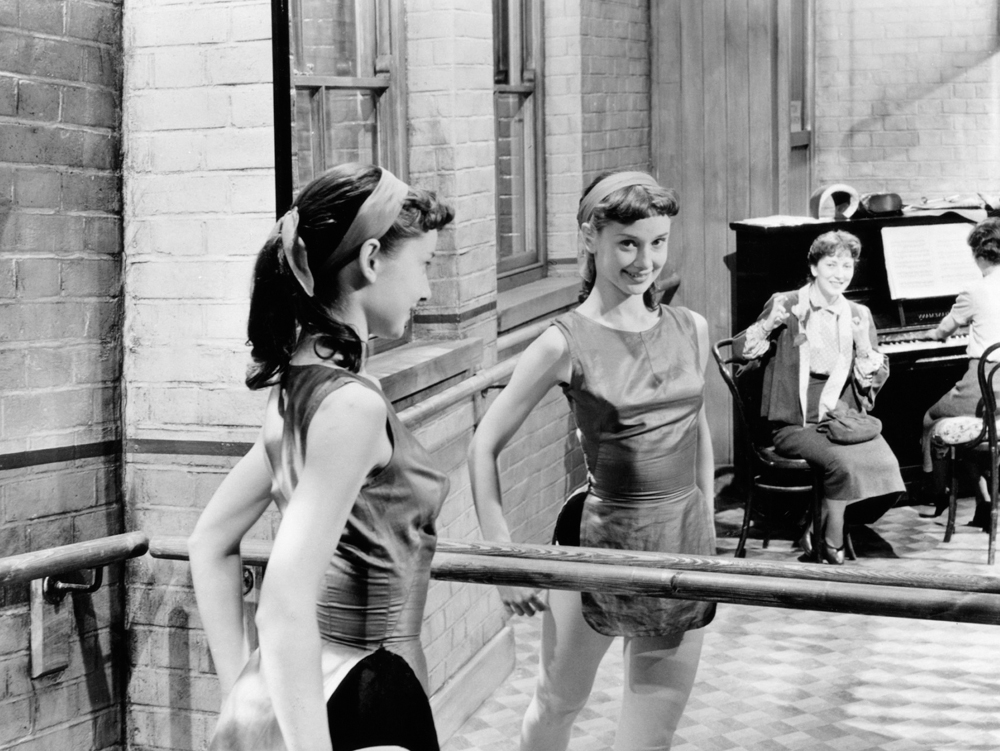
In the 1952 film Secret People, Audrey plays a ballerina prodigy. Since she had spent many years training for just this profession, she did all of her own dance sequences.
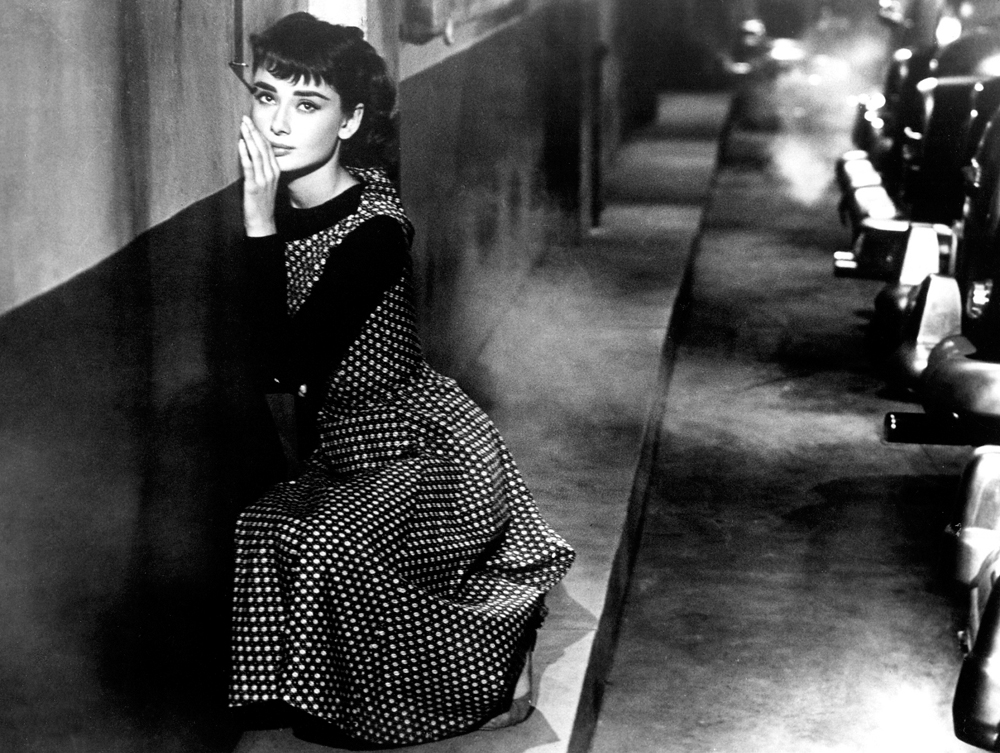
“P.S. Don’t have David at the funeral. He probably wouldn’t even cry.”
—POSTSCRIPT TO SABRINA’S SUICIDE NOTE
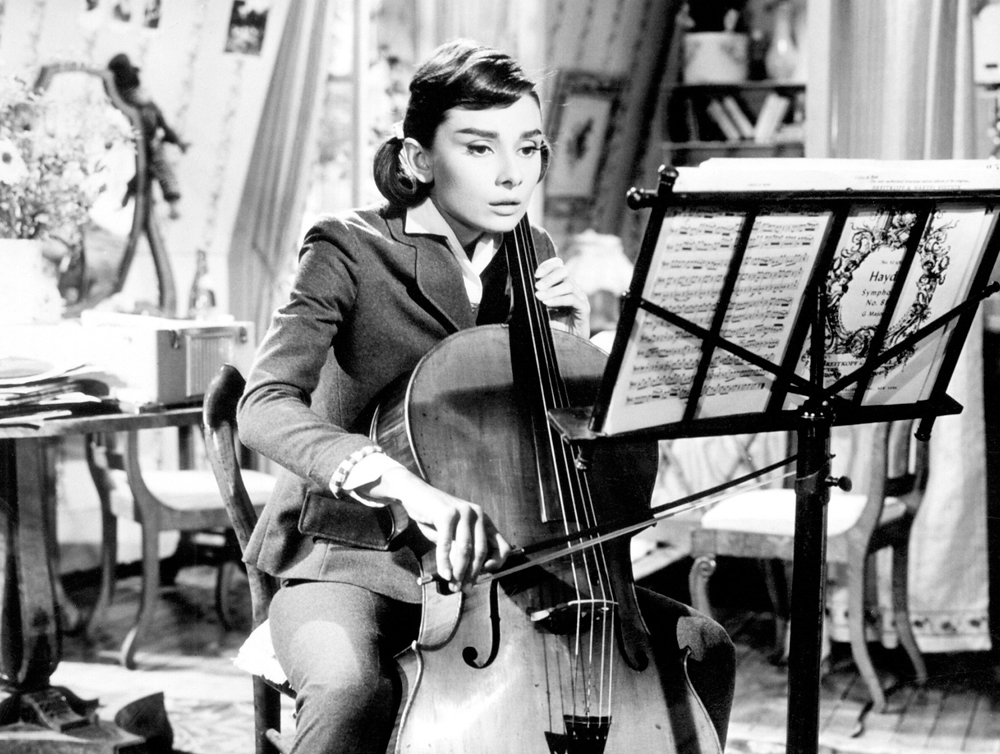
Love in the Afternoon (1957) features Hepburn as Ariane Chavasse, the naïve cello-playing daughter of a cynical private detective (Maurice Chevalier). While she is practicing Haydn, she cannot get the strains of the song “Fascination”—or the visage of playboy millionaire Frank Flanagan (Gary Cooper)—out of her mind.
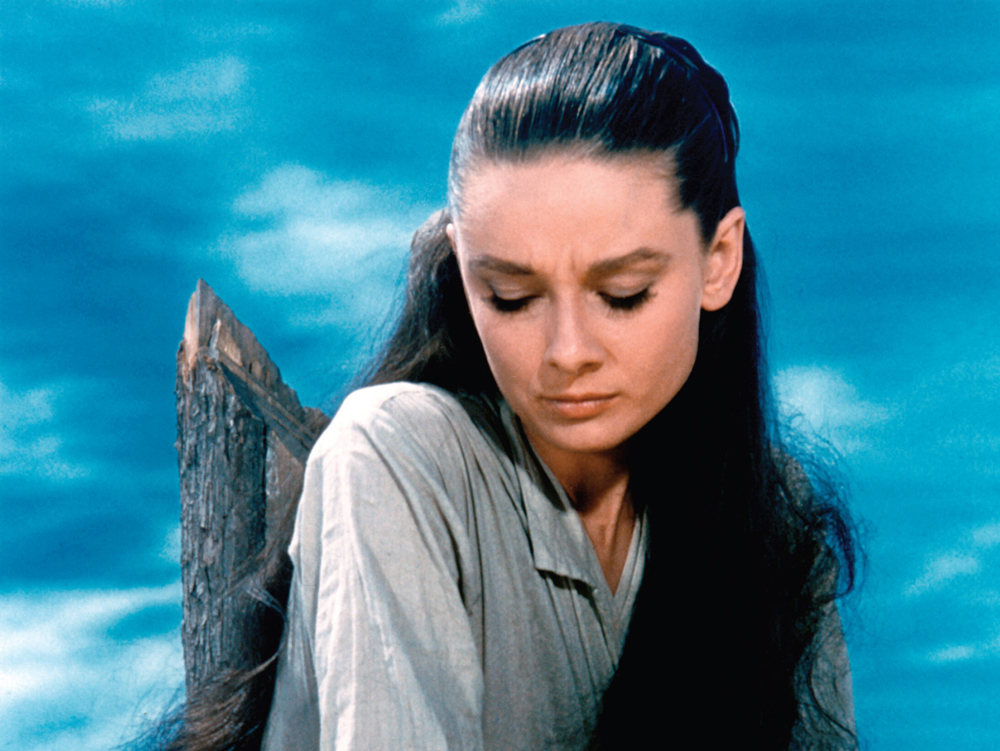
John Huston’s The Unforgiven (1960) was Hepburn’s only Western. In between scenes, Audrey got thrown by a horse and broke her back. After spending six weeks in the hospital, she resumed acting in the film while wearing a back brace.
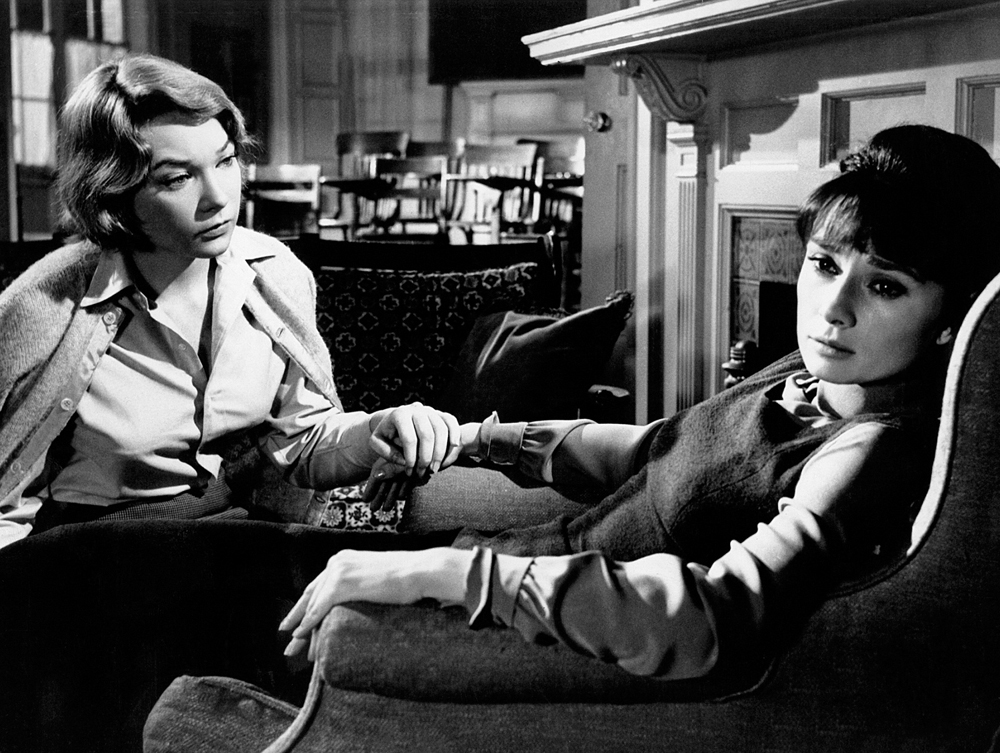
“She was supposed to teach me how to dress, and I was supposed to teach her how to cuss. Neither of us succeeded.”
—SHIRLEY MACLAINE, AUDREY’S COSTAR IN THE CHILDREN’S HOUR (1961)

Fred Astaire’s character Dick Avery in Funny Face was based on famed fashion photographer Richard Avedon, who was responsible for photographic images in the film.

David: Sabrina, where have you been all my life?
Sabrina: Right above the garage.
—DIALOGUE FROM THE FILM SABRINA (1954)
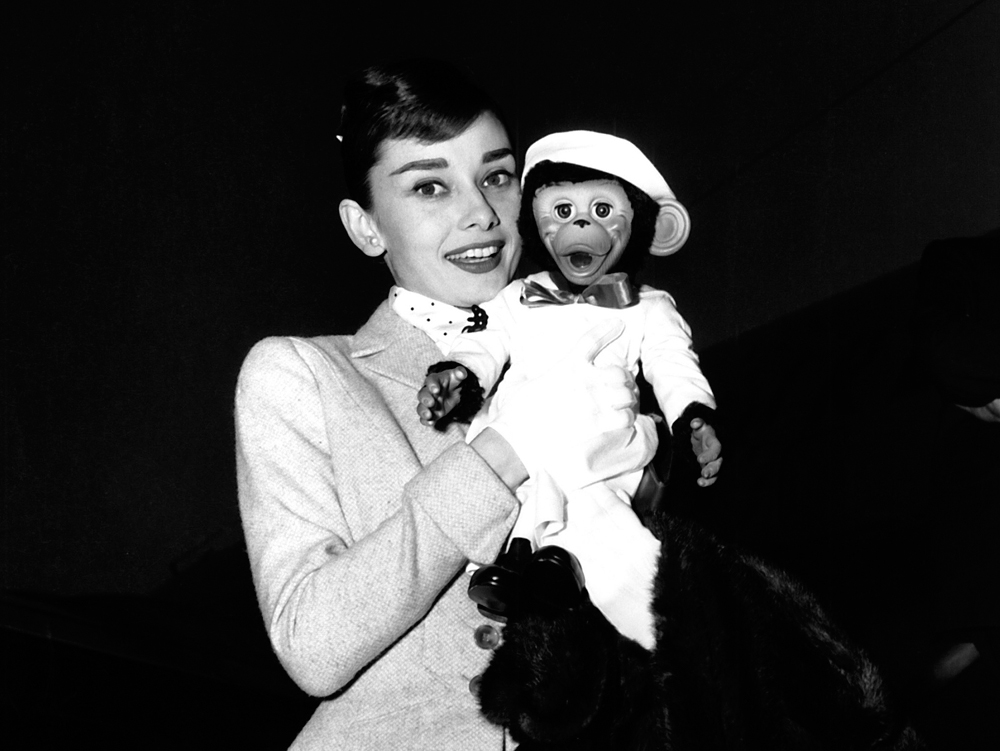
While filming The Nun’s Story in the Congo, Audrey got bitten by a monkey. Since the bite wasn’t serious, she didn’t feel the need to worry her husband Mel Ferrer, who learned about it from a news story. The worried Ferrer spent the next twenty-four hours trying to get a phone call through to her.

Audrey credited her regal grace to growing up in England and Holland, countries that boasted their own princesses. Hepburn herself was the daughter of a baroness. Her mother’s father, a baron who had held the post of governor of Surinam, had been a favorite of Holland’s Queen Wihelmina.
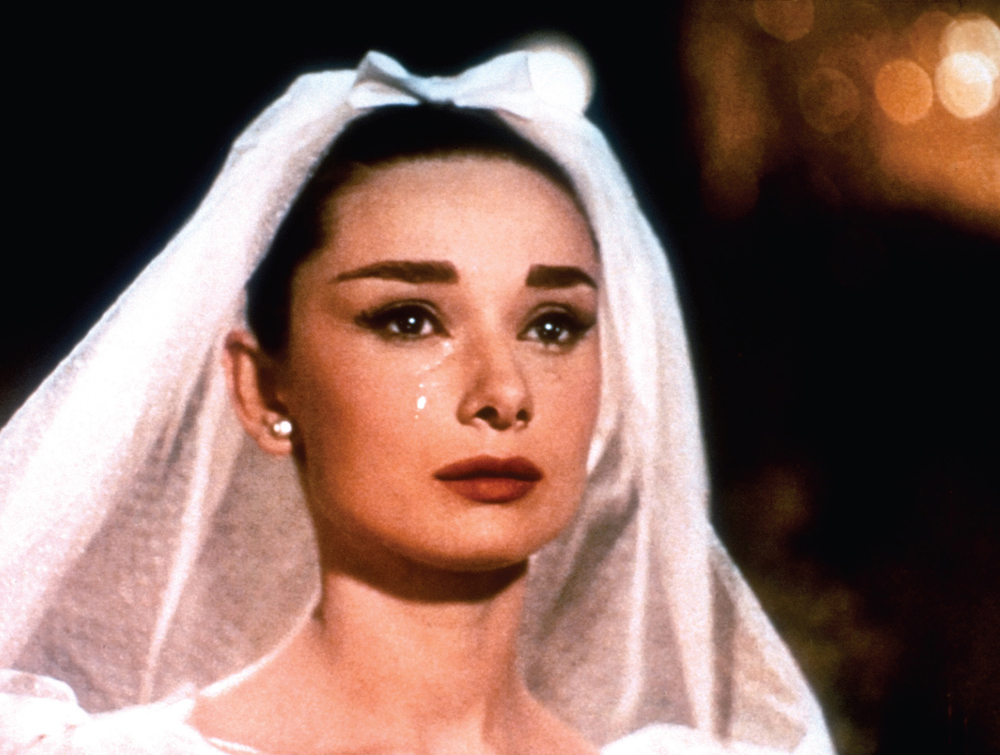
“Audrey’s extremely talented, and she learns with amazing speed.”
—FRED ASTAIRE, HEPBURN’S COSTAR IN FUNNY FACE
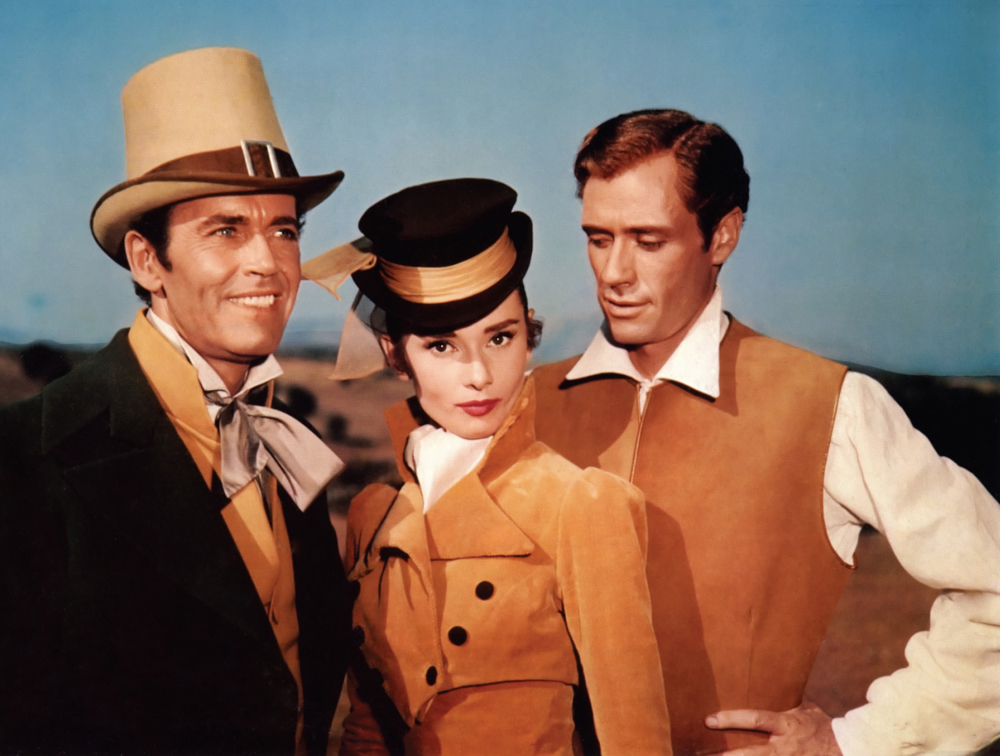
Audrey Hepburn (playing Natasha Rostov) costarred with Henry Fonda (Pierre Bezukhov) and real-life husband Mel Ferrer (Prince Andrei Bolkonsky) in the costume drama War and Peace.
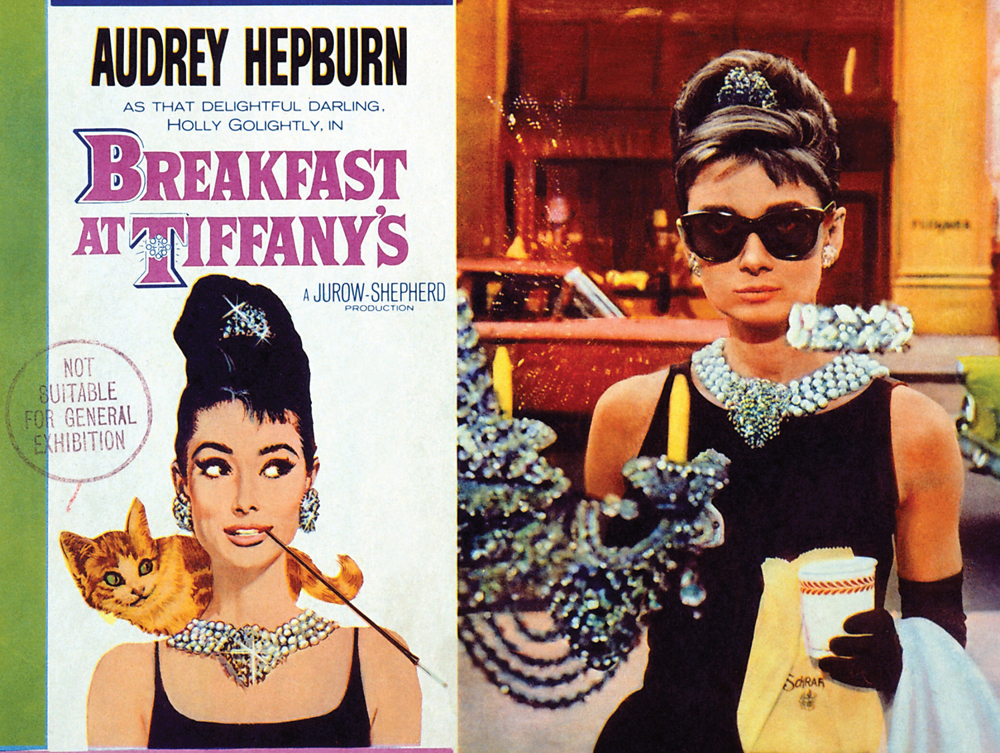
“What I’ve found does the most good is just to get into a taxi and go to Tiffany’s. It calms me down right away, the quietness and the proud look of it …”
—AS HOLLY GOLIGHTLY IN BREAKFAST AT TIFFANY’S
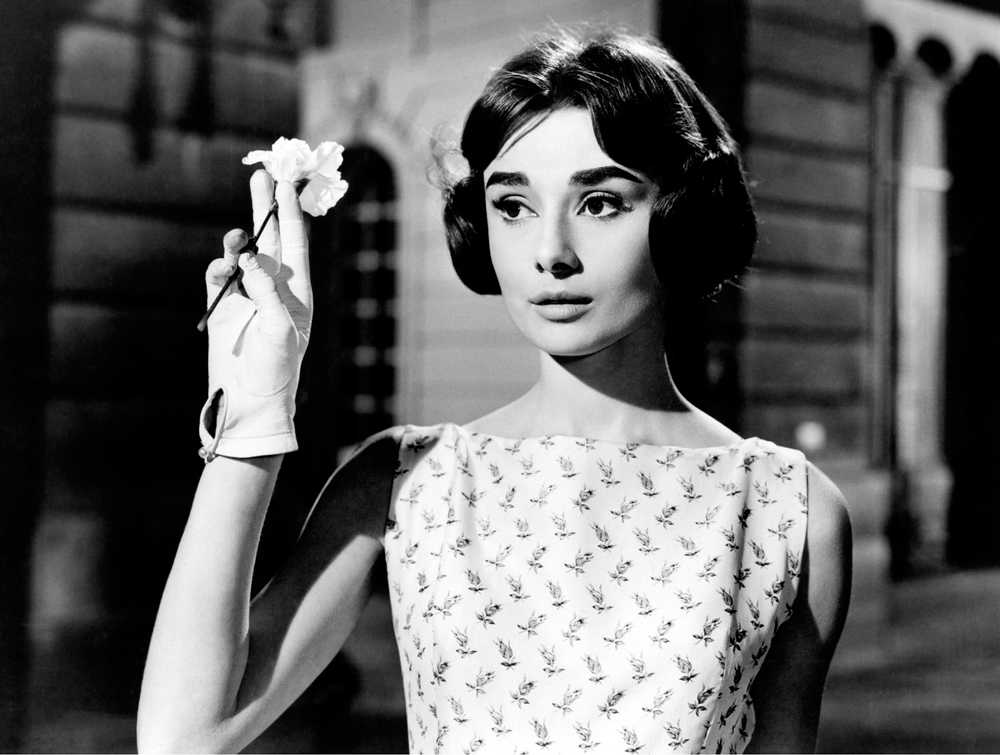
“Miss Hepburn is so winning in her youthful innocence and gaiety, so wistful when things go badly, that her impact on the jaded Cooper is easy to understand. Once again she will move her spectators to laugh and cry at almost the same time.”
—WILLIAM K. ZINSSER, NEW YORK HERALD TRIBUNE, IN A REVIEW OF LOVE IN THE AFTERNOON
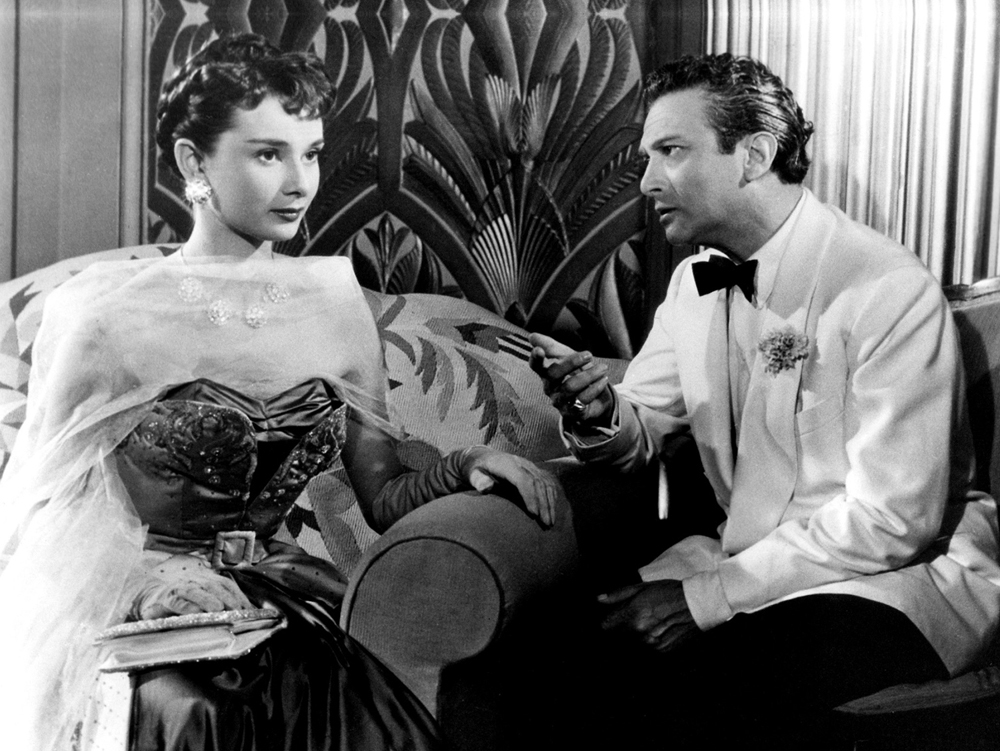
Monte Carlo Baby (1951) was shot at the same time as a French-language version, Nous irons à Monte Carlo (1952). Audrey was one of the only cast members to appear in both films. During the filming of this movie, Hepburn met famed novelist Colette, who recommended her for a stage version of her novel Gigi.
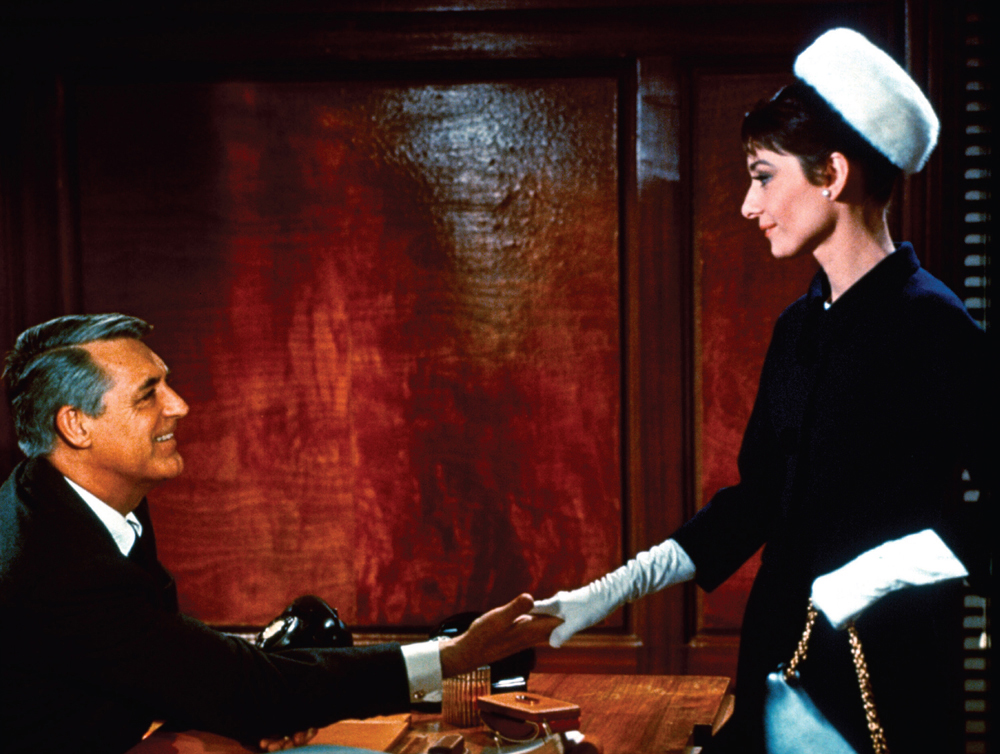
“Audrey is an extremely female female, but she has the strength of steel in that little sinewy body.”
—CARY GRANT
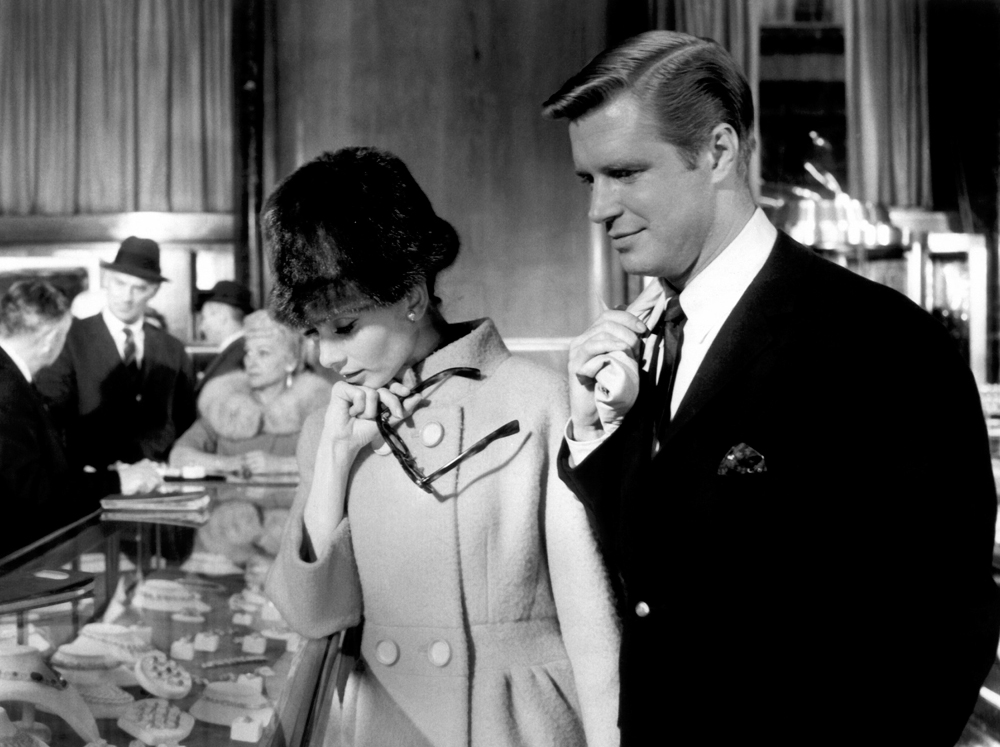
Much of Breakfast at Tiffany’s was filmed on location in New York City; Tiffany’s, usually closed for business on Sunday, opened its golden doors on that day to accommodate the film crew shooting scenes in the store’s interior.

Though everybody else has an award, Audrey is still all smiles at the 1965 Academy Awards. When Audrey didn’t get an Oscar nomination for her performance in My Fair Lady (1964), some devoted members of the Academy tried a write-in campaign. Public consensus was that the snub occurred because Marnie Nixon’s singing voice was dubbed over Hepburn’s for the vast majority of the musical numbers.
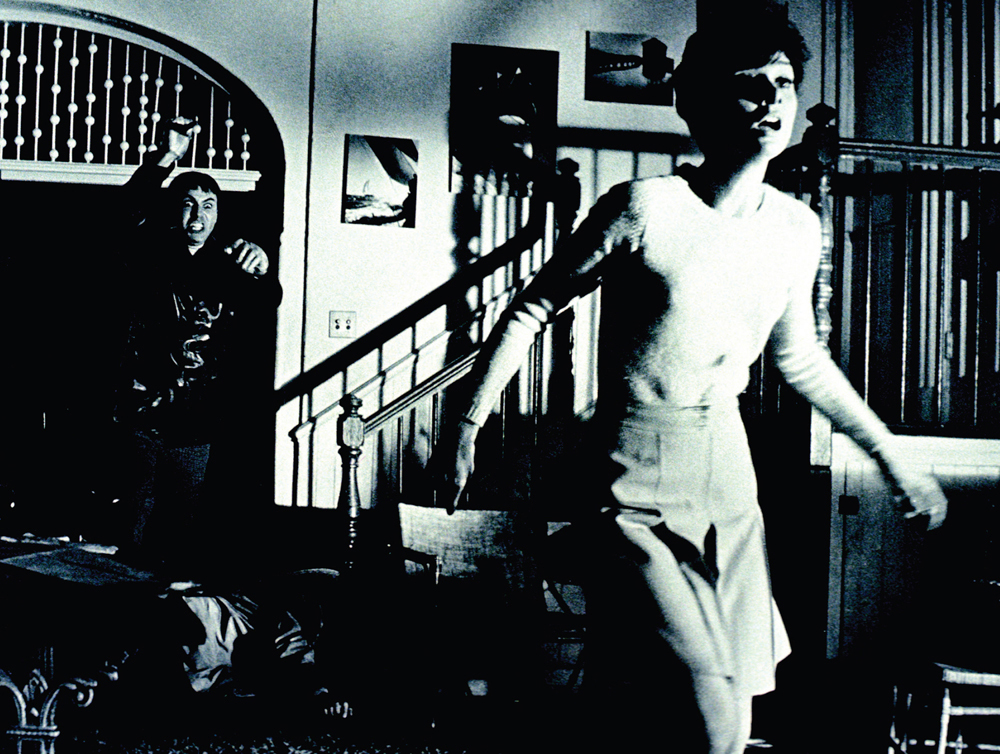
“You don’t get nominated for being mean to Audrey Hepburn!”
—ALAN ARKIN, RESPONDING TO WHY HE DIDN’T GET AN OSCAR NOMINATION FOR HIS ROLE AS THE SINISTER HARRY ROAT IN WAIT UNTIL DARK
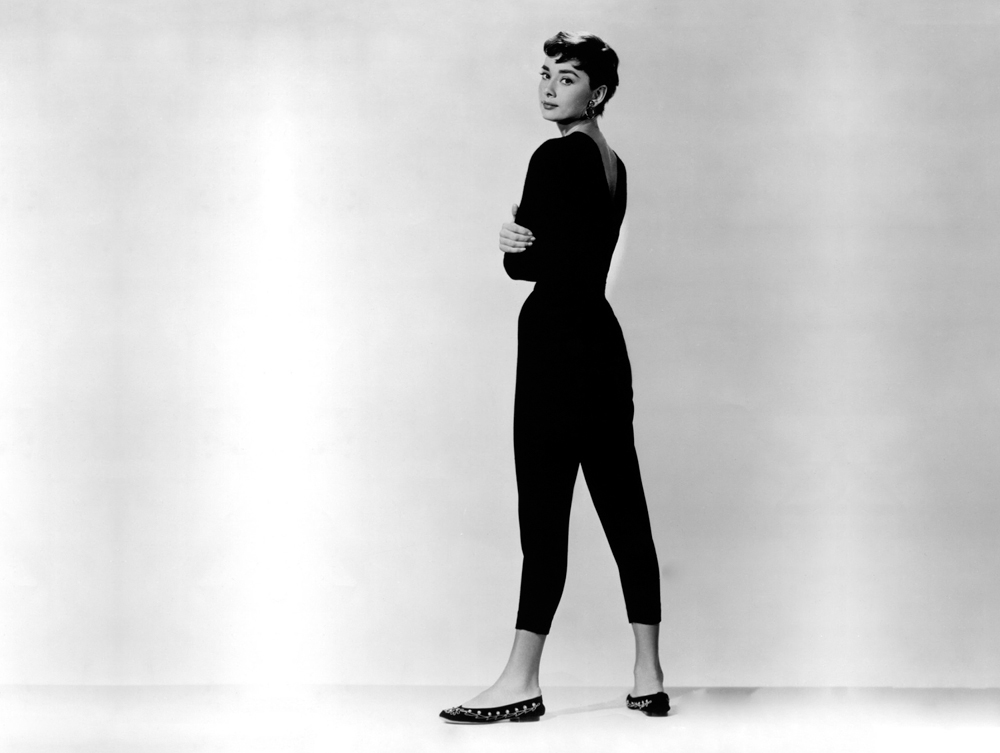
34A-20-34
—HEPBURN’S MEASUREMENTS IN 1953, ACCORDING TO CELEBRITY SLEUTH MAGAZINE
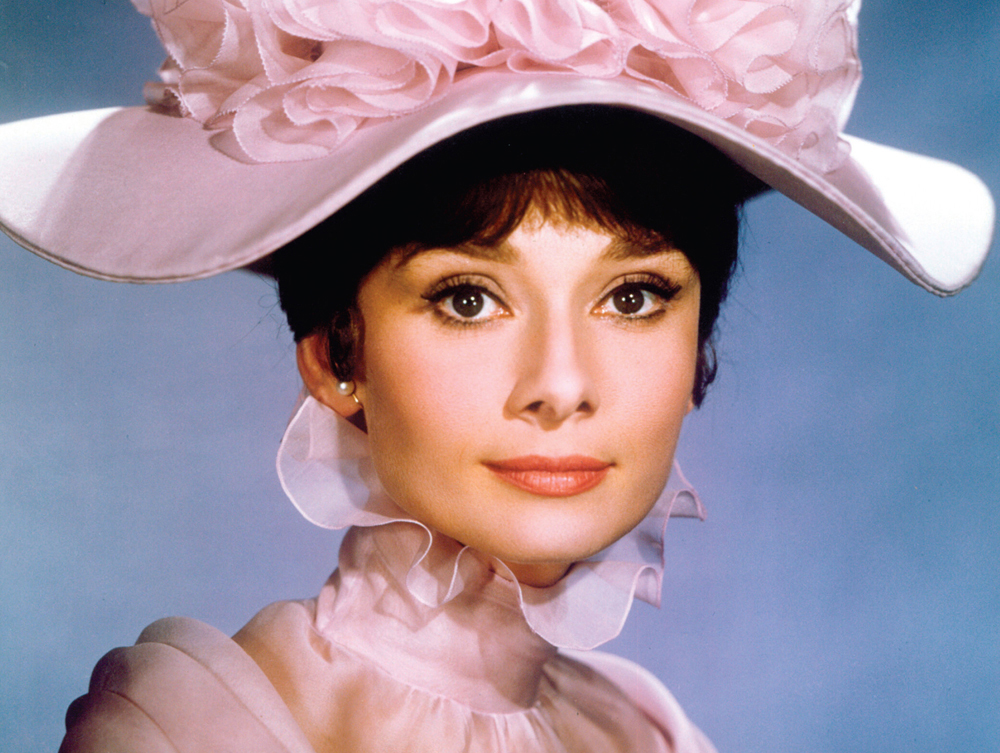
“She is one of us.”
—THE QUEEN MOTHER OVERHEARD SPEAKING TO QUEEN ELIZABETH AFTER BEING INTRODUCED TO AUDREY
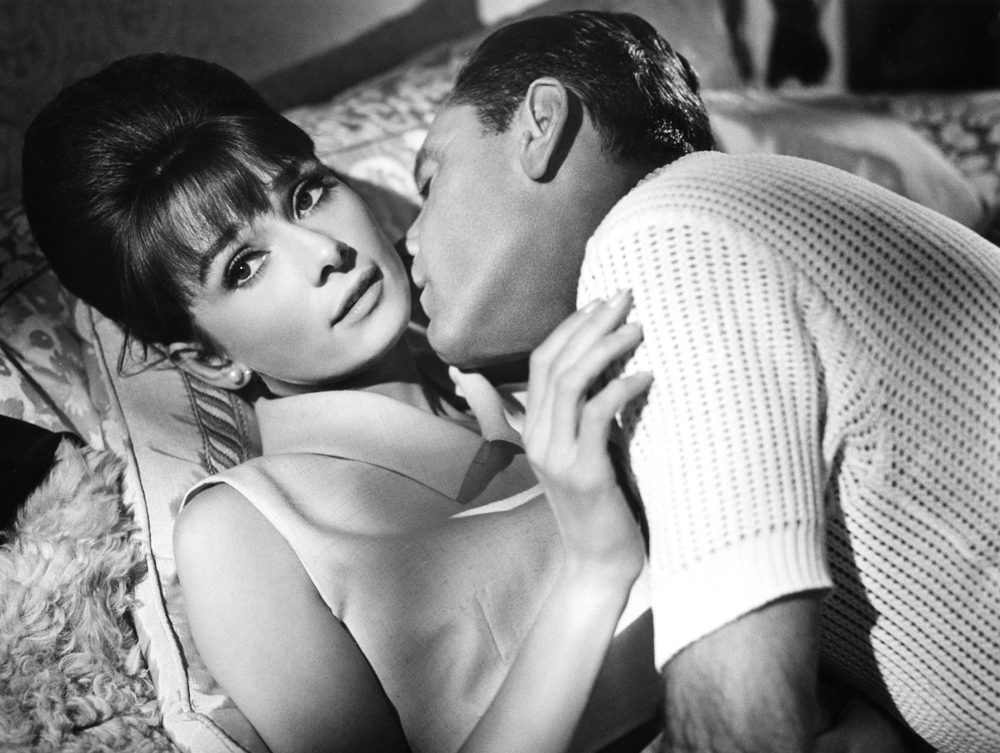
“Audrey tried to stay calm, cool, and collected, but working with Bill was a torment for her.”
—RICHARD QUINE, DIRECTOR OF PARIS WHEN IT SIZZLES, ABOUT HEPBURN’S RELATIONSHIP WITH FORMER FLAME WILLIAM HOLDEN

Before Hepburn and MacLaine signed on, the other Hepburn—Katharine—and Doris Day were considered for the roles of the schoolteachers in the remake of Lillian Hellman’s The Children’s Hour.

At Hepburn’s insistence, Paramount hired Givenchy to design the leading lady’s wardrobe for Funny Face, which really irked costumer Edith Head despite the fact that she had gotten screen credit for Givenchy’s gown worn by Audrey in Sabrina.
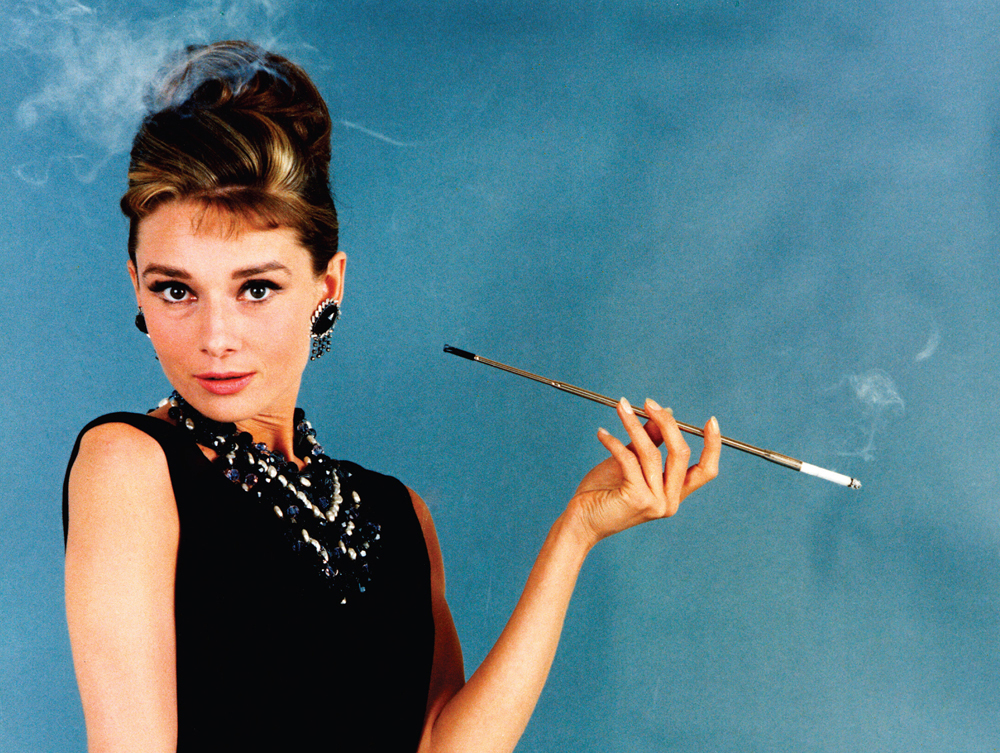
“‘Moon River’ was written for her. No one else had ever understood it so completely. There have been more than a thousand versions of ‘Moon River,’ but hers is unquestionably the greatest.”
—HENRY MANCINI
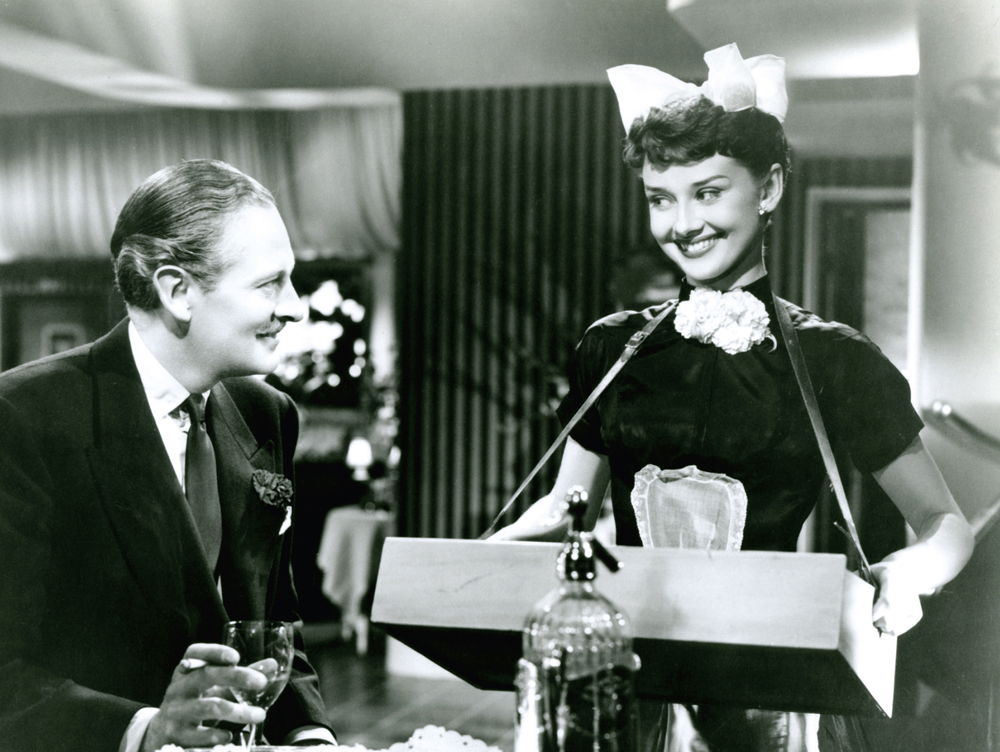
Audrey played a bit part as a cigarette girl in the 1951 British film Laughter in Paradise. She was originally selected for a larger role, but her stage obligations didn’t allow for that sort of time commitment.
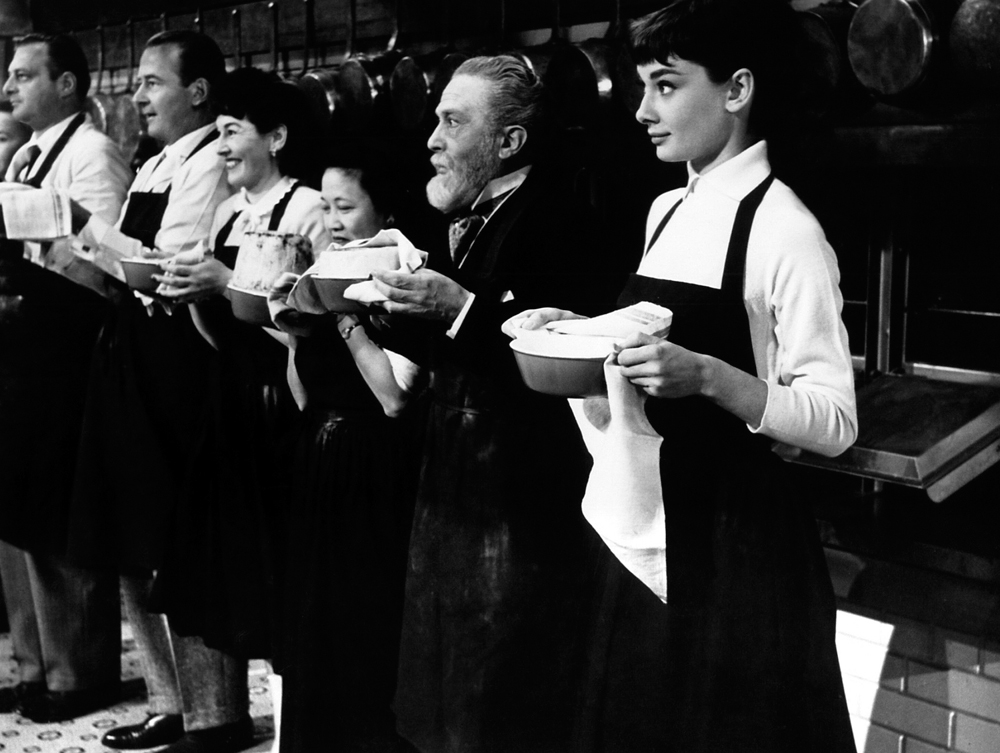
“A woman happily in love, she burns the soufflé. A woman unhappily in love, she forgets to turn on the oven.”
—BARON ST. FONTANEL IN SABRINA
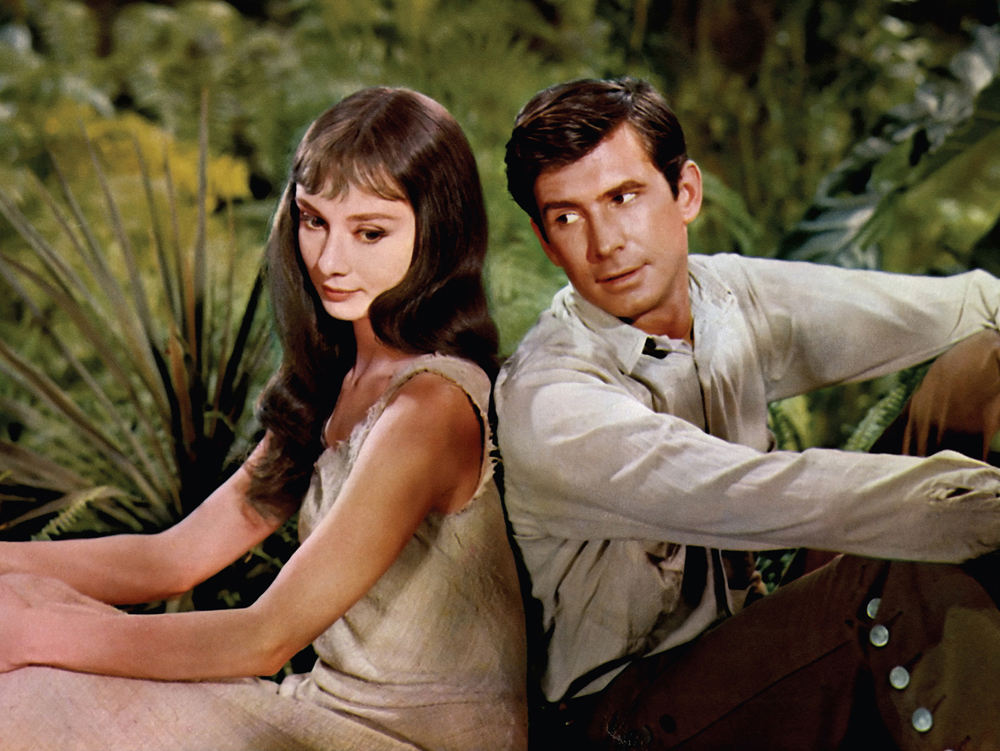
Audrey turned down the title role in The Diary of Anne Frank to appear in Green Mansions (1959), the first major Hollywood film to be shot in the wide-screen format called Panavision. Though still youthful looking, she considered herself too old (at thirty) to play a fifteen-year-old.
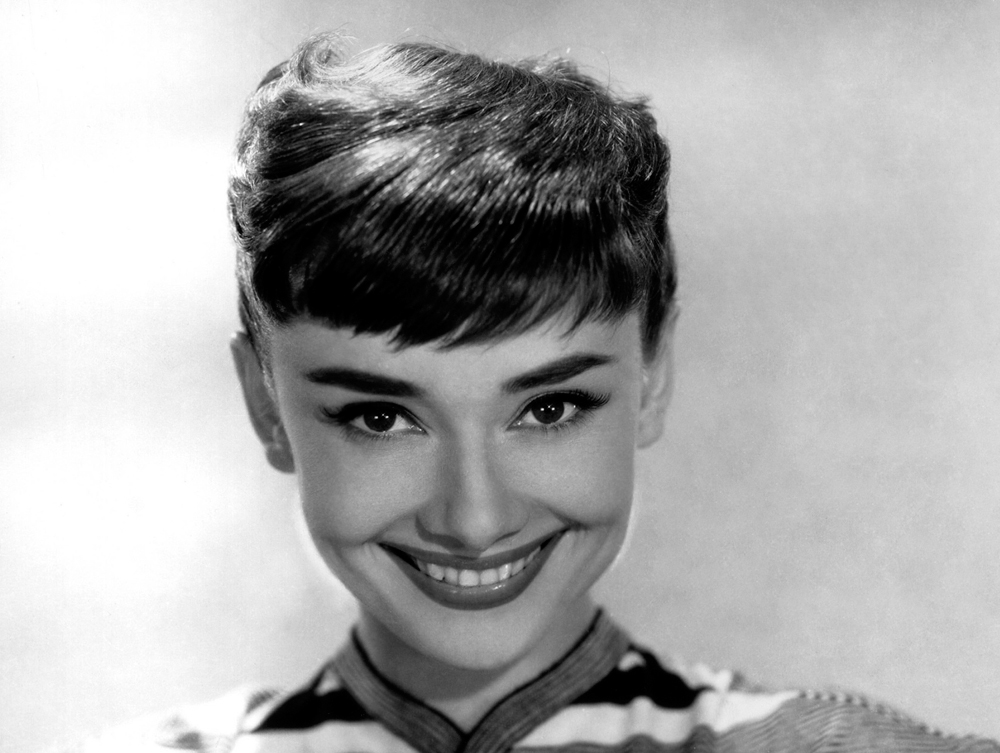
In 1962, husband Mel Ferrer was keen on Audrey to star as Peter Pan in a live-action version of the film, with Peter Sellers as Captain Hook and Hayley Mills as Wendy, but the project fell through.
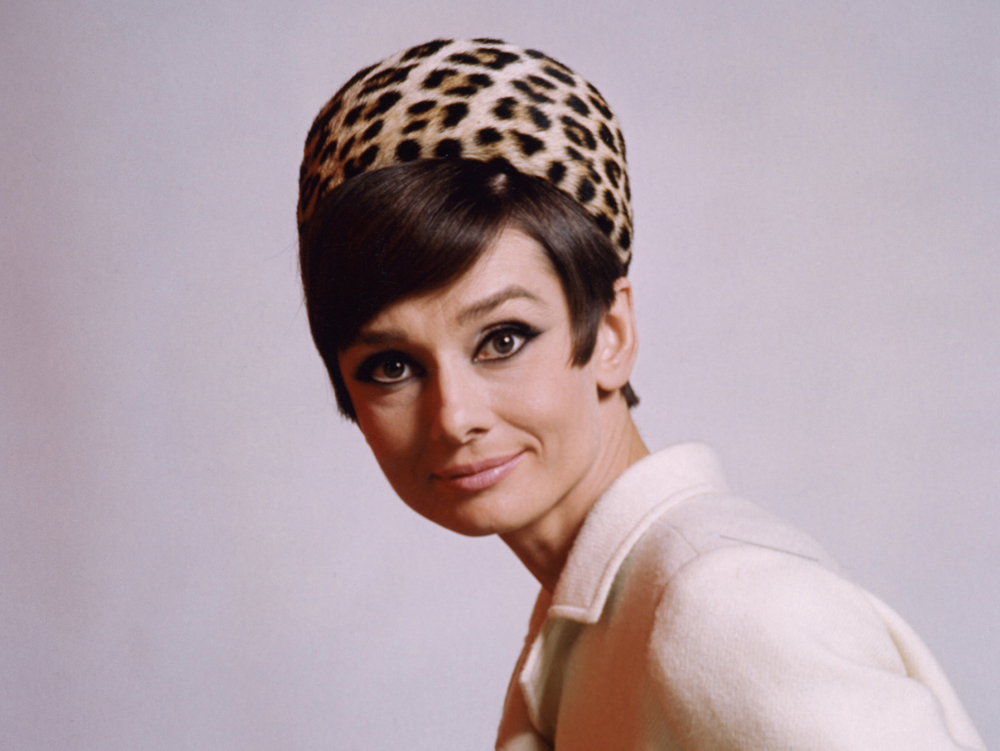
William Wyler’s third picture with Hepburn, How to Steal a Million (1966), started out being called Venus Rising and then was changed to How to Steal a Million Dollars and Live Happily Ever After before the title was mercifully shortened.

“Chaleur torride, mais suis heureuse. [Torrid heat, but am happy]”
—A TELEGRAM SENT BY AUDREY TO HER HUSBAND WHEN SHE ARRIVED IN THE CONGO FOR THE FILMING OF THE NUN’S STORY
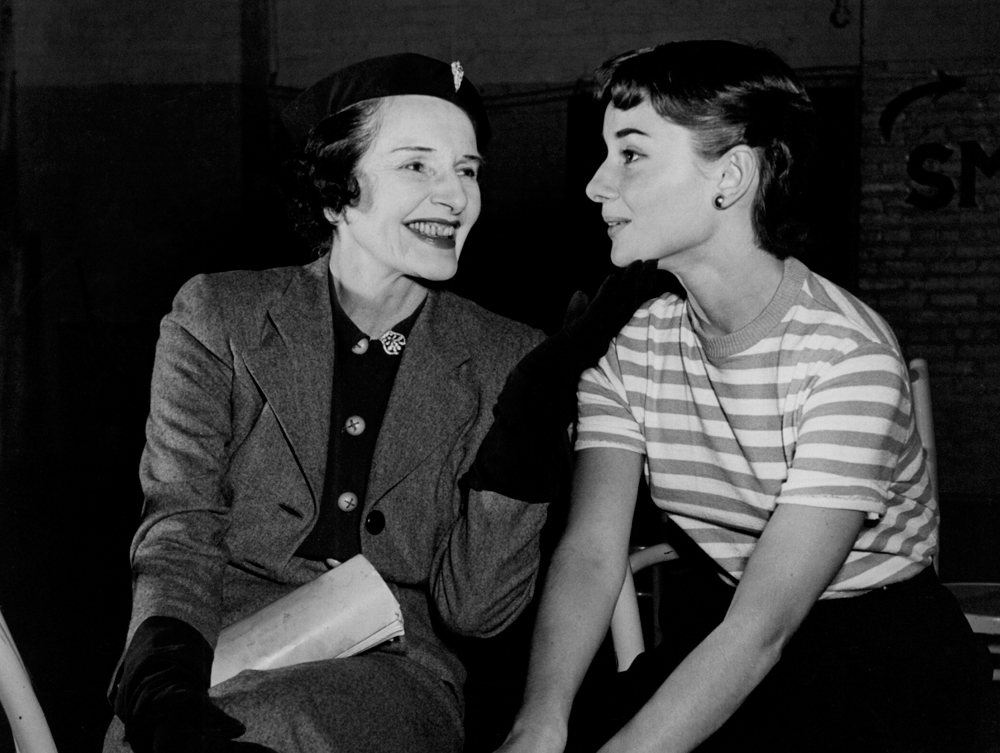
“Audrey had that rare thing—audience authority—that makes everybody look at you.”
—CATHLEEN NESBITT, WHO PLAYED GREAT-AUNT ALICIA IN THE STAGE PRODUCTION OF GIGI
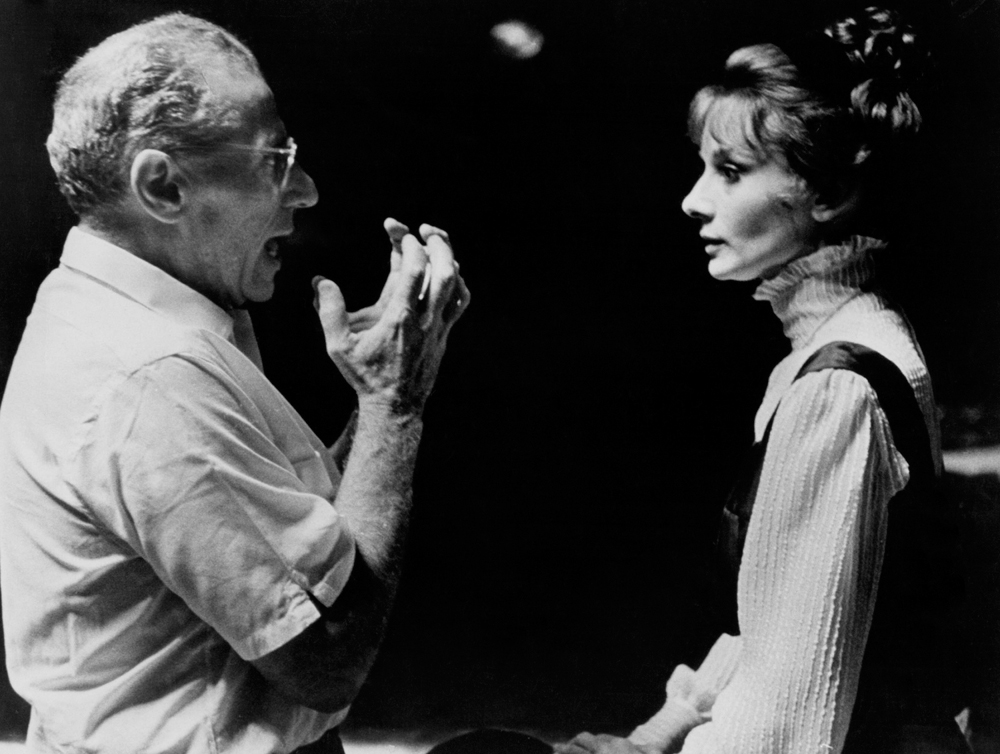
While George Cukor had to turn down directing her in Gigi, due to other obligations, he did direct Audrey more than a decade later in My Fair Lady.
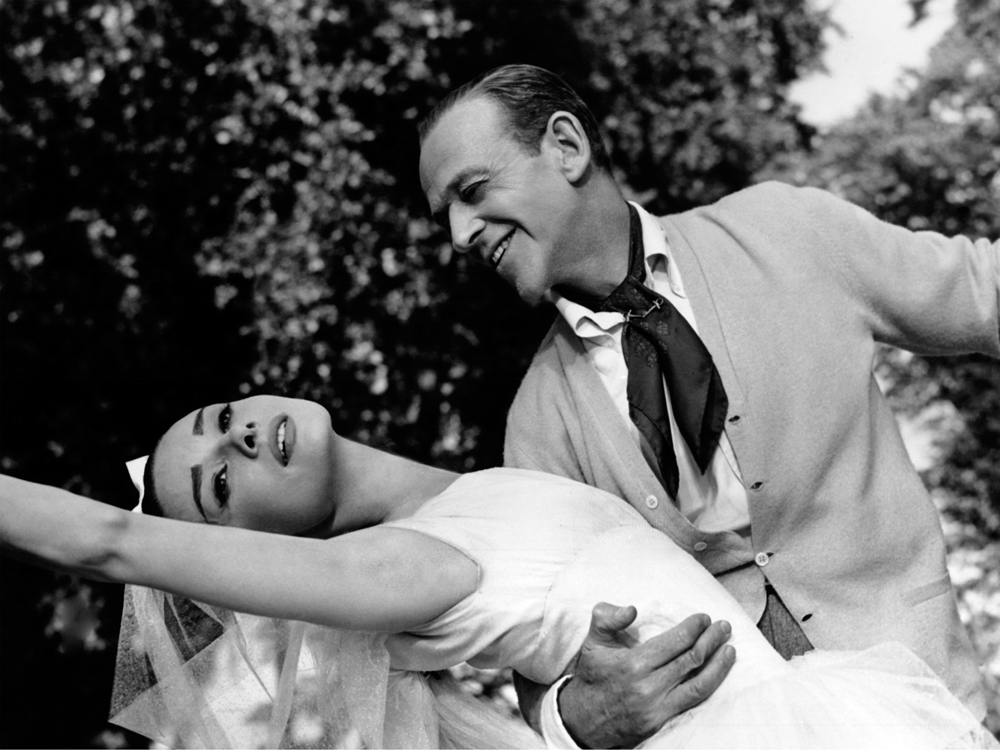
“I knew the time had come to quit when one critic said of Funny Face that it had ‘something old, something new.’”
—FRED ASTAIRE, AUDREY’S COSTAR IN FUNNY FACE
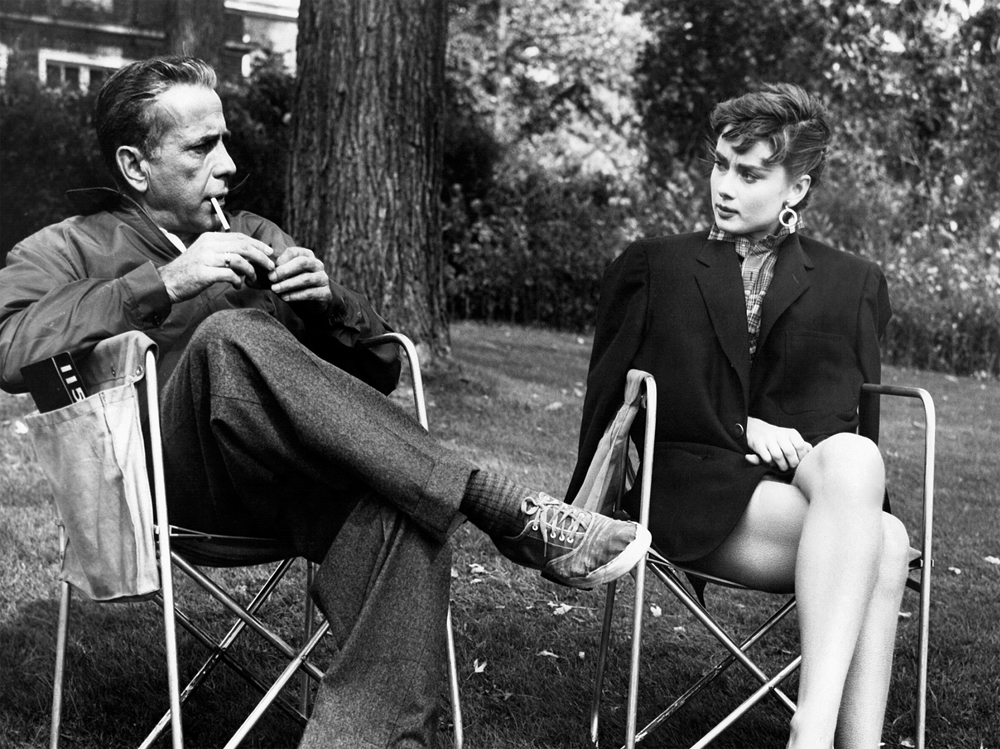
“Audrey is like a good tennis player. She is unpredictable, interesting, and varies her shots.”
—HUMPHREY BOGART, DURING THE FILMING OF SABRINA
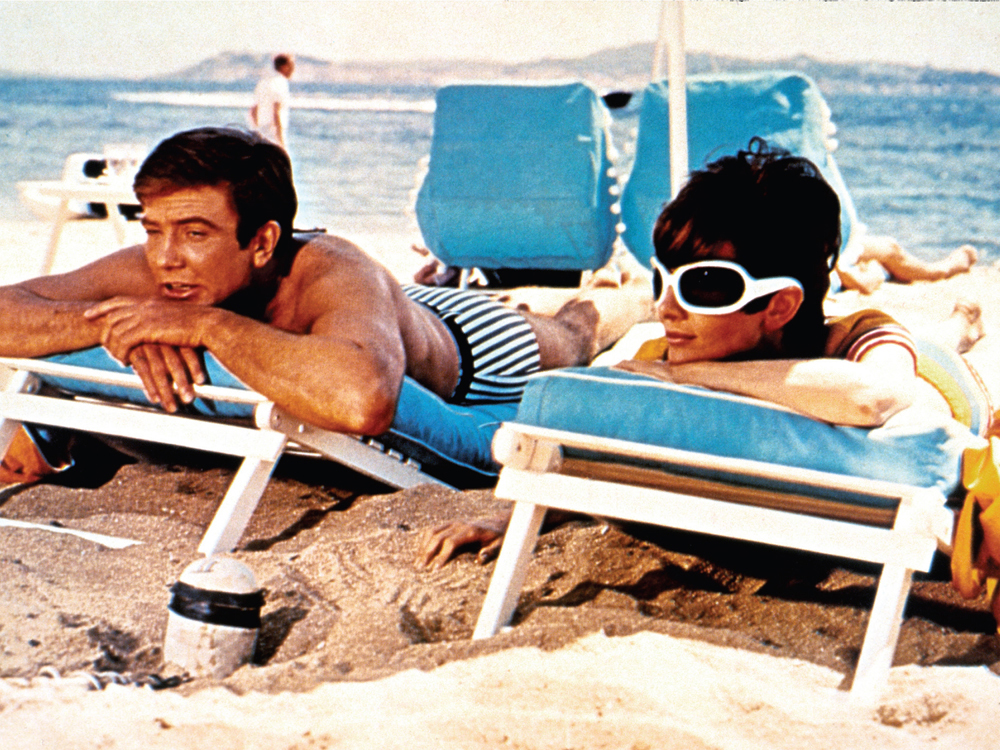
In Two for the Road (1967), the couple played by Audrey and Albert Finney struggle through the ups and downs of romance and marriage. The movie reflected Audrey’s own troubled twelve-year union to Mel Ferrer.

“I’ve been in pictures over thirty years, but I’ve never had a more exciting leading lady than Audrey.”
—GARY COOPER, HEPBURN’S COSTAR IN LOVE IN THE AFTERNOON

Marilyn Monroe was originally cast as Holly Golightly, but she backed out, and the sophisticated and elegant Audrey Hepburn got the role, which suited her to a T, as in tiara.
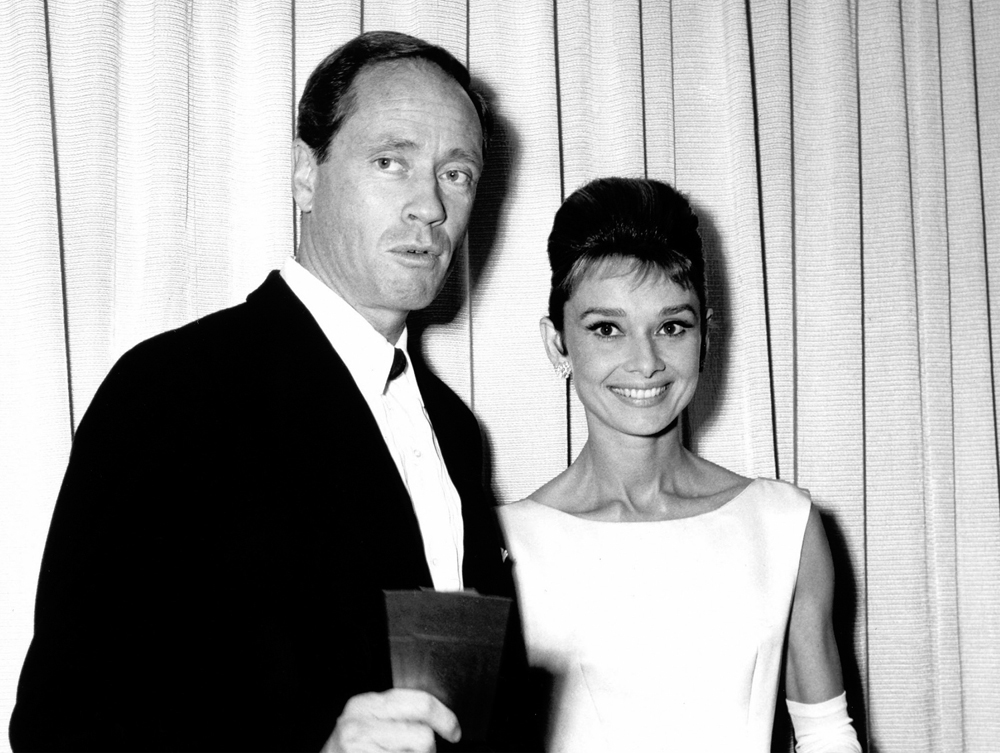
“Mel Ferrer!”
—AUDREY’S RESPONSE TO THE QUESTION “WHO IS YOUR FAVORITE ACTOR?” IN AN INTERVIEW IN AN OCTOBER 1966 COSMOPOLITAN INTERVIEW
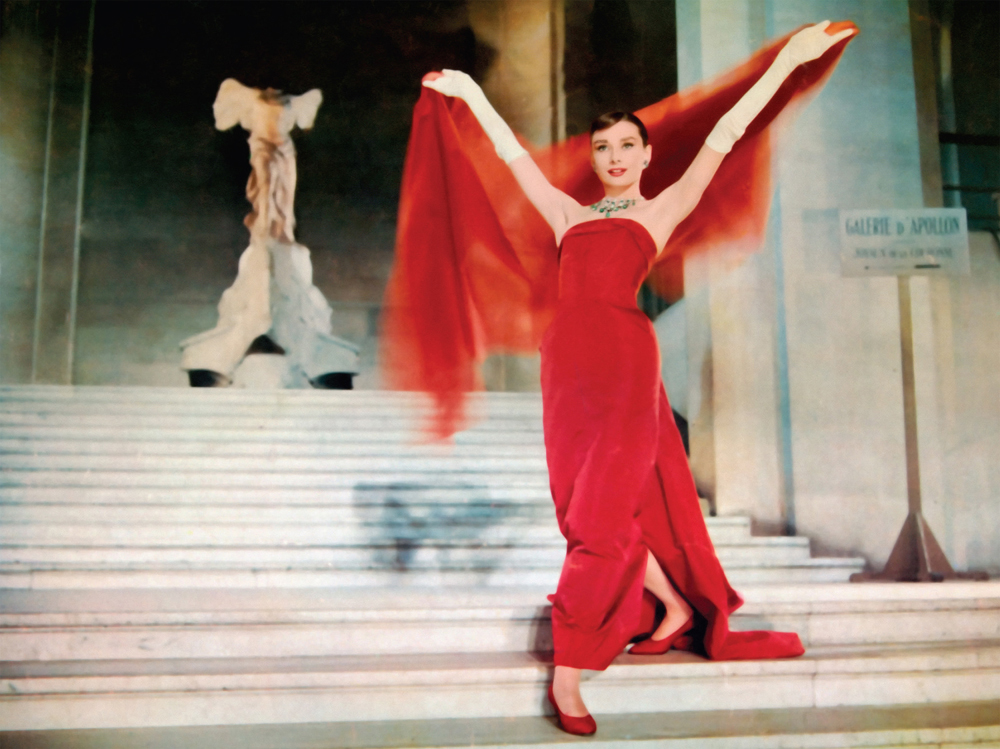
When films were shot on location, city institutions could be very accommodating. The crew took over Paris’s Louvre Museum in its off hours to film this scene from Funny Face.
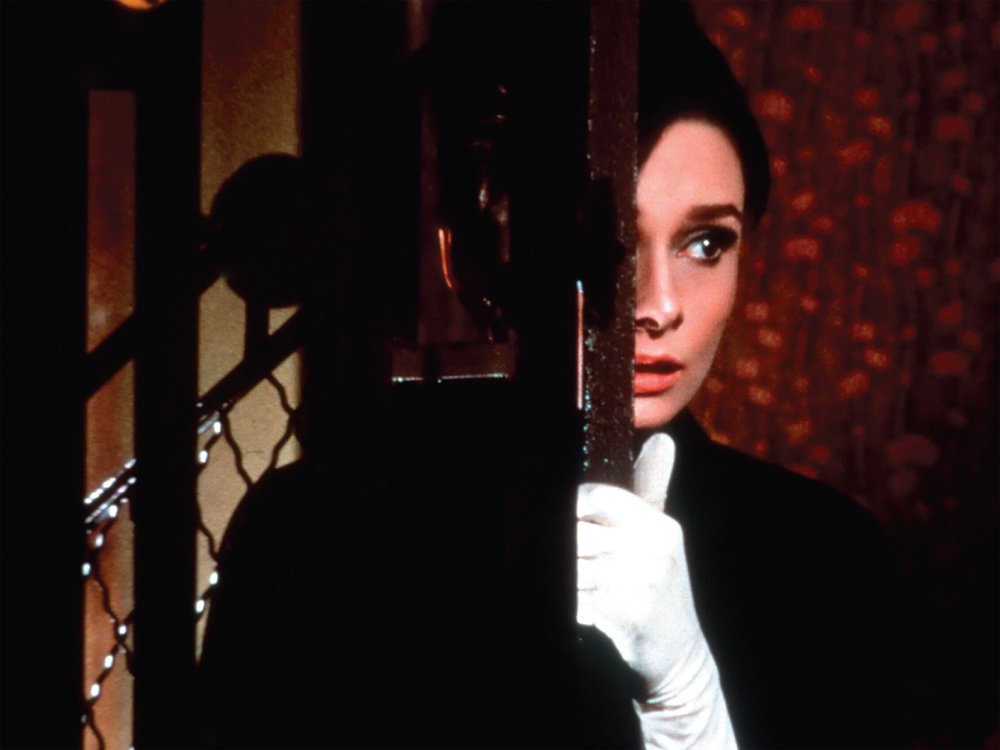
For Charade (1963), Givenchy created nineteen different outfits for Audrey. She wore the designer’s couture both on and off the screen, and Interdit Perfume was created by him especially for her.

“Soon you will see one of the world’s most exciting and exotic stories … Young lovers in a jungle Eden where menace lurks amid the orchids!”
—FROM THE AD FOR GREEN MANSIONS
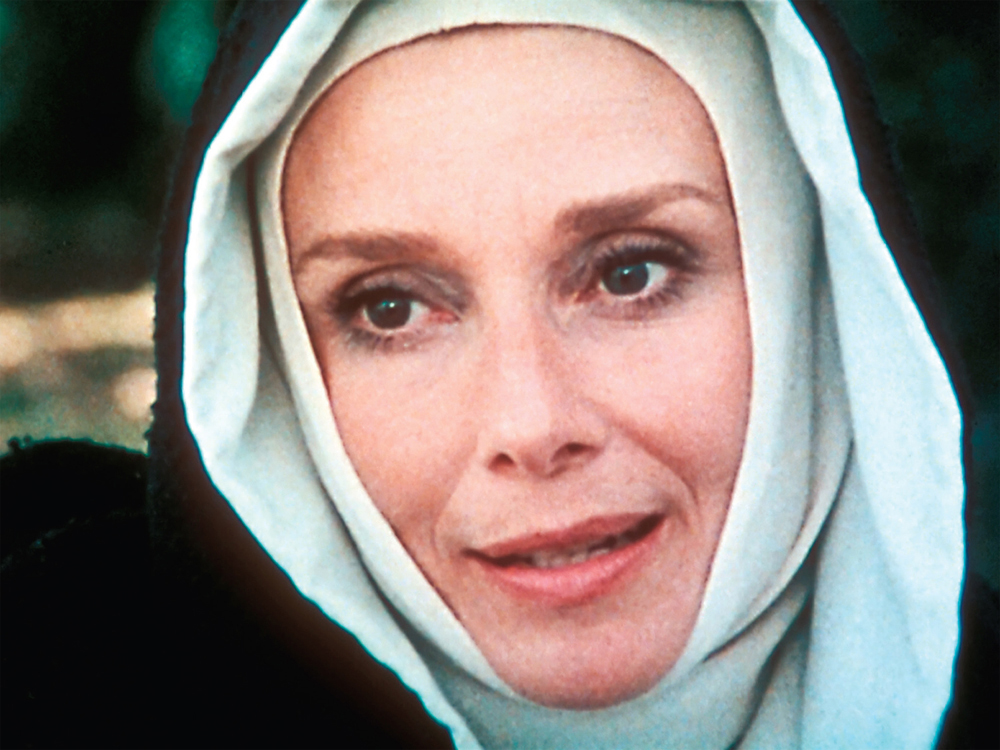
Audrey portrayed a nun twice—once in her Oscar-nominated performance as Sister Luke in The Nun’s Story, and again as a mother superior formerly known as Maid Marian in Robin and Marian (1976). Her sons, who adored Sean Connery in his James Bond role, insisted that she take the part.
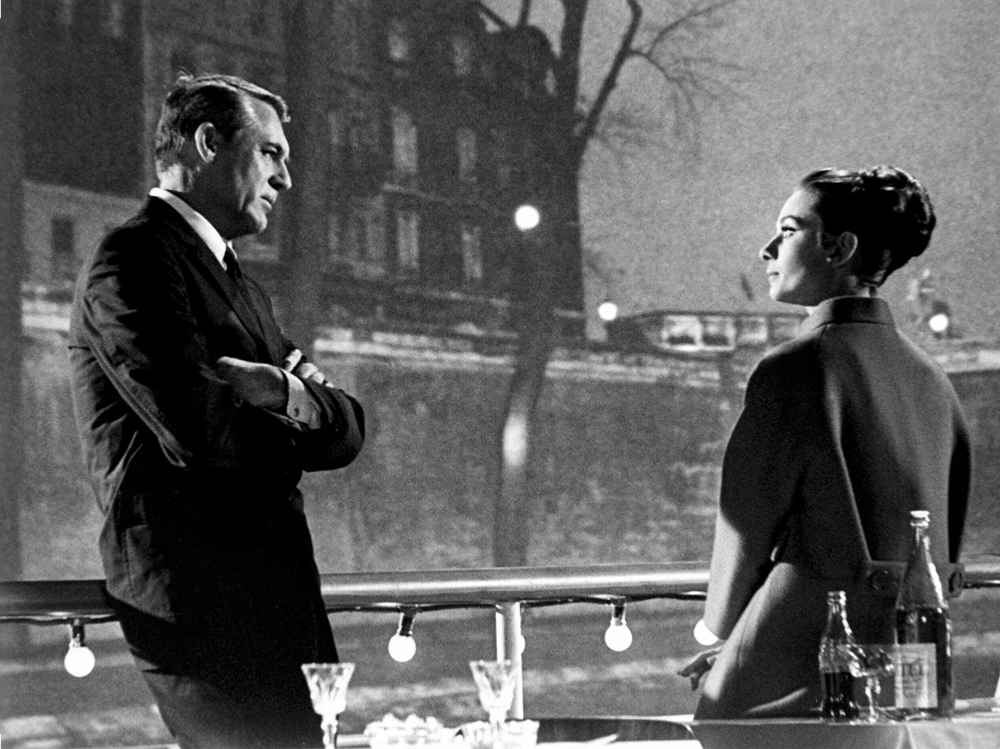
“We couldn’t have made Charade anywhere else. Fifty percent of the picture took place in the Paris streets. It would have been impossible to build that many exterior sets in Hollywood and still have the production solvent.”
—CARY GRANT
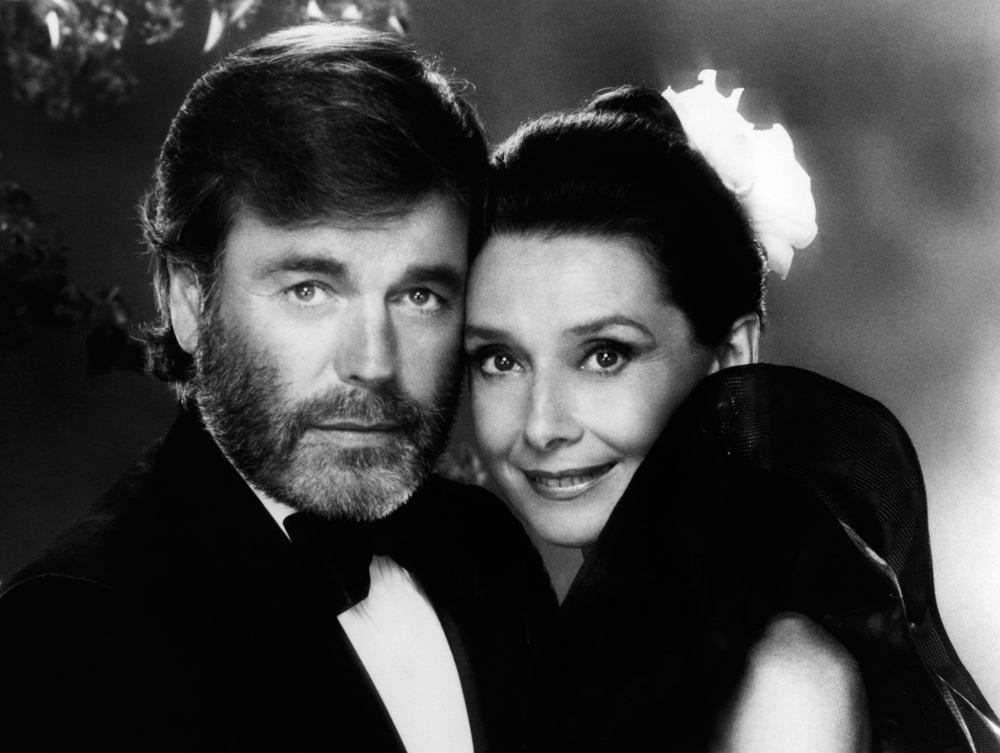
Hepburn costarred with Robert Wagner in Love Among Thieves (1987), her last feature-length film. While an adoring audience gave the TV movie high ratings, critics were less kind about the material, deeming the script “uninspired.”
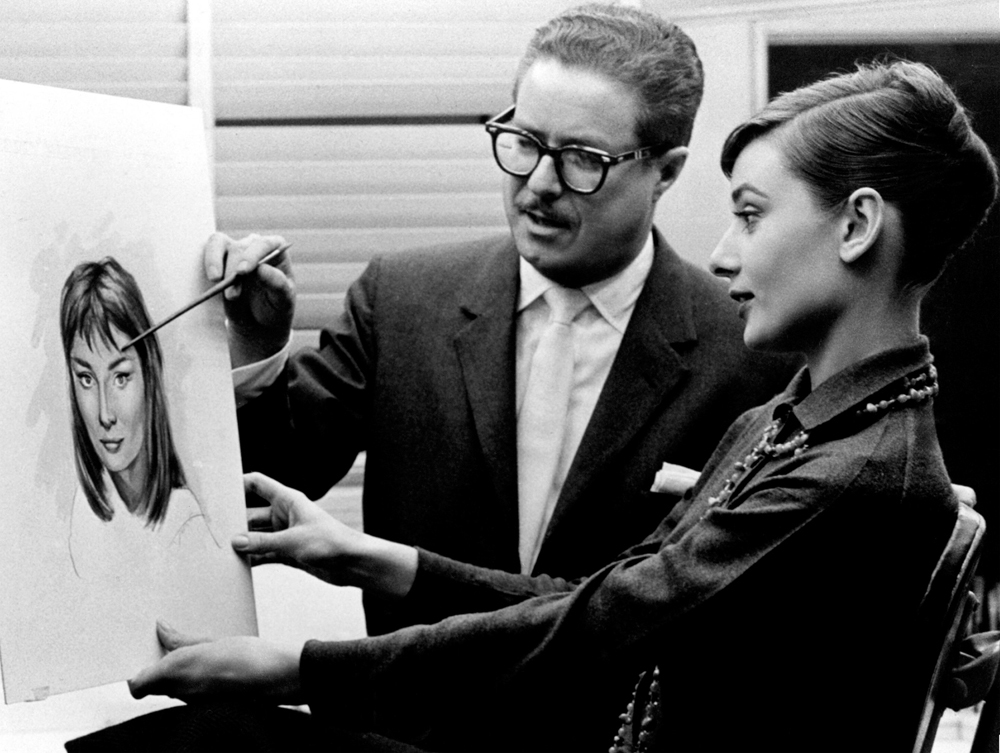
Green Mansion makeup artist William Tuttle shows Audrey the somewhat naturalistic look (by Hollywood standards) for jungle girl Rima to complement MGM hairstylist Sidney Guilaroff’s plan for the character’s long flowing hair and feathery bangs.

Audrey didn’t enlist Givenchy to do her wardrobe for Robin and Marian, as her various costumes were composed of sackcloth, based on original attire of the period.
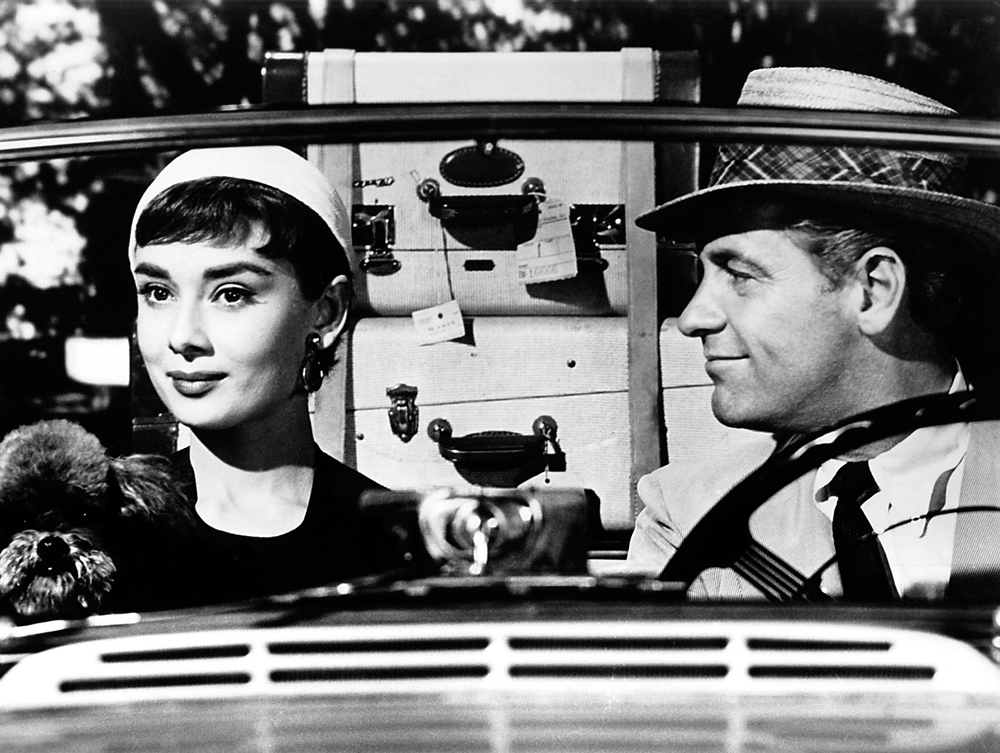
In 2002, Sabrina became one of twenty-five films selected for the National Film Registry. To qualify, a movie must be at least ten years old and “be culturally, historically, or aesthetically significant.”
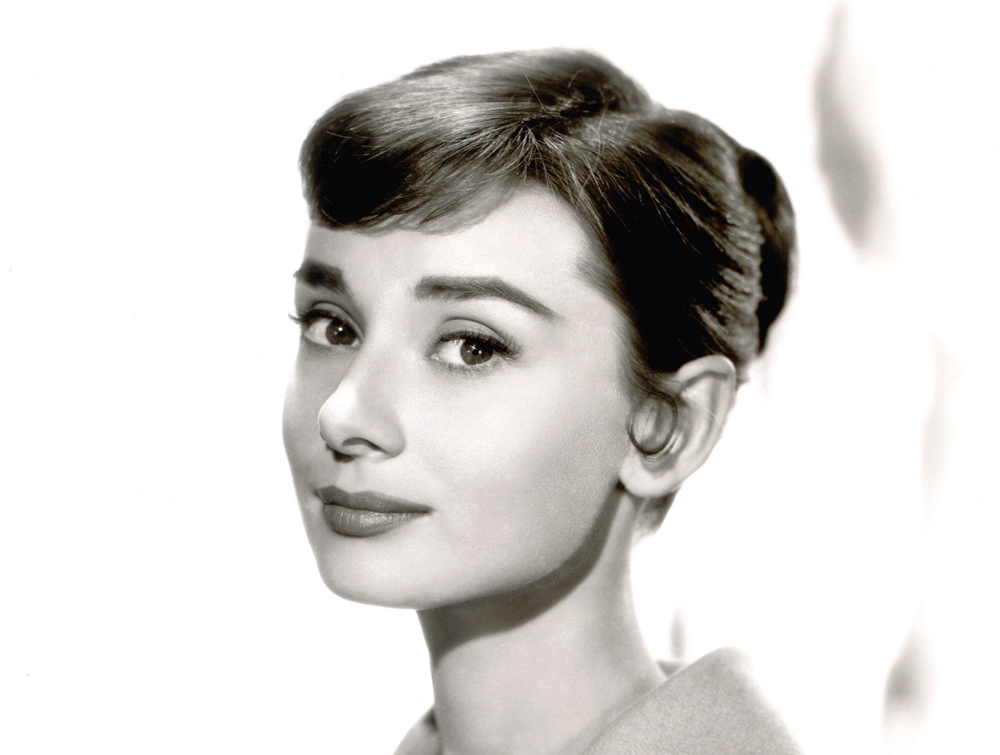
“She seemed so terribly … different, and so very angelic and so very ethereal—like some sort of fairytale person.”
—HARRY BELAFONTE
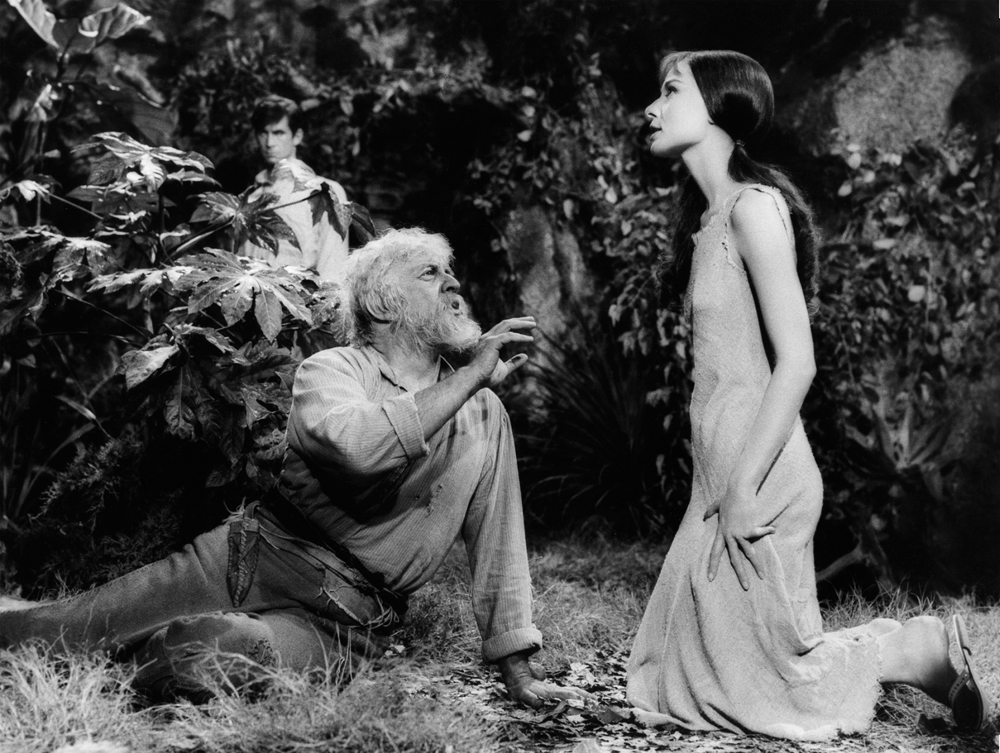
“I don’t know of anyone in the rest of the world—with the possible exception of Audrey Hepburn—who in bare feet and rags … could give an impression so regal and dignified.”
—MORITZ THOMSEN, FROM LIVING POOR: A PEACE CORPS CHRONICLE, 1970
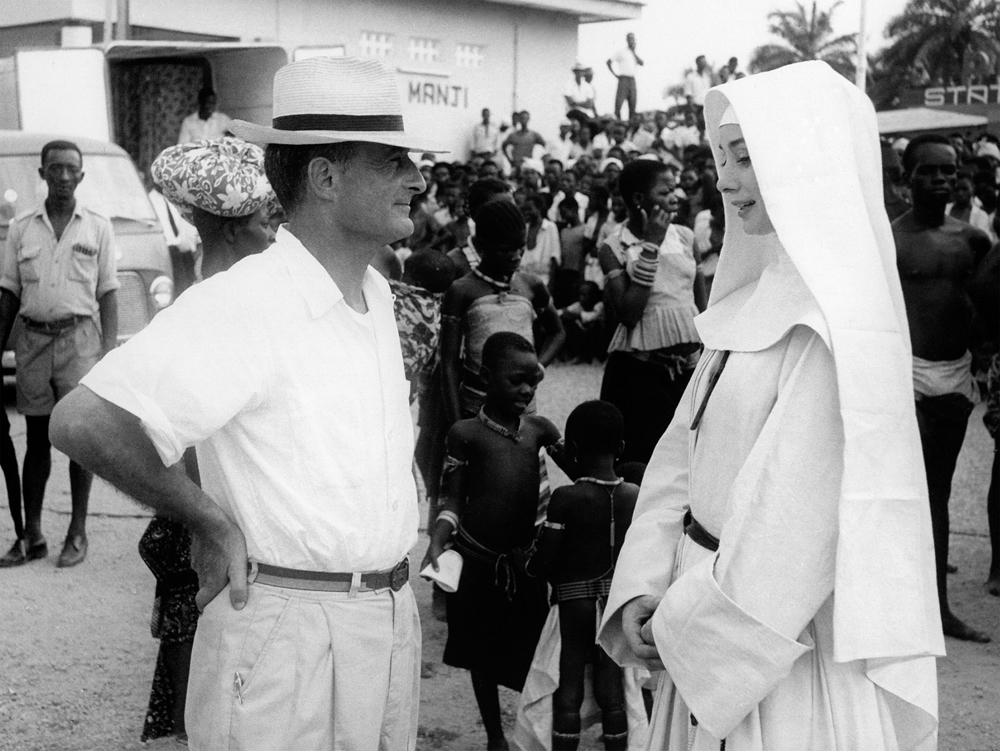
The local Congo inhabitants were confused by why Audrey, clothed for the role of Sister Luke in The Nun’s Story, was driven around by a chauffeur and changed into “civilian” clothes at the end of the day. Audrey didn’t speak the native language to explain, so her driver told them: “She is a queen of a far-away country called Warner Brothers.” This didn’t clarify the nun part, so he added: “The queen of Warner Brothers happens to be a nun.”
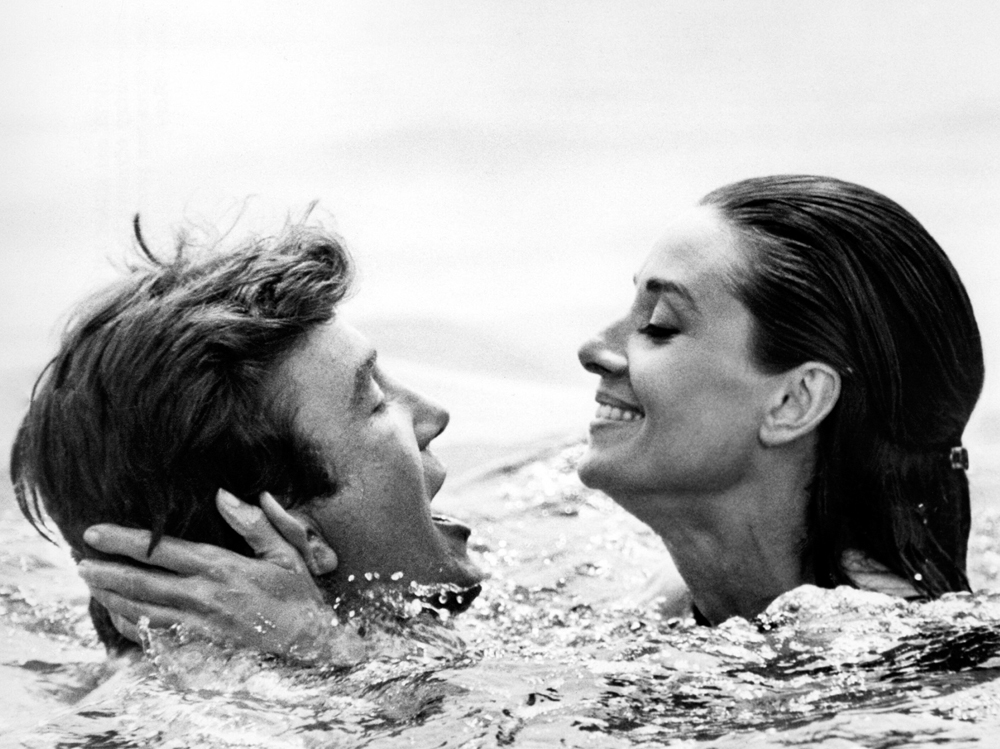
“I’d like to be played as a child by Natalie Wood. I’d have some romantic scenes as Audrey Hepburn and have gritty black-and-white scenes as Patricia Neal.”
—GLORIA STEINEM
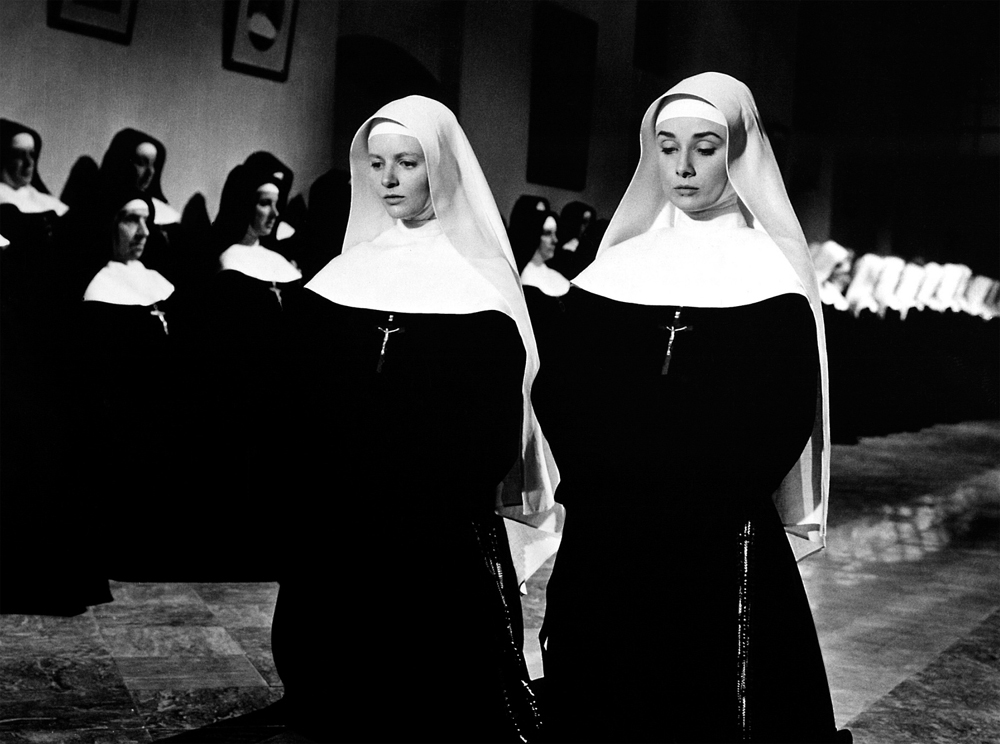
Ingrid Bergman had been offered the role of Sister Luke in The Nun’s Story but turned it down because she considered herself too old for the part, instead suggesting Audrey Hepburn. Hepburn received an Oscar nomination for her portrayal in the dramatization of the real nun’s life.

“Just nonsense. I don’t want to be ungallant, but Audrey’s too old and wrinkled for me.”
—GROUCHO MARX, 1952, ABOUT GOSSIP THAT HEPBURN AND HE WERE ENGAGED
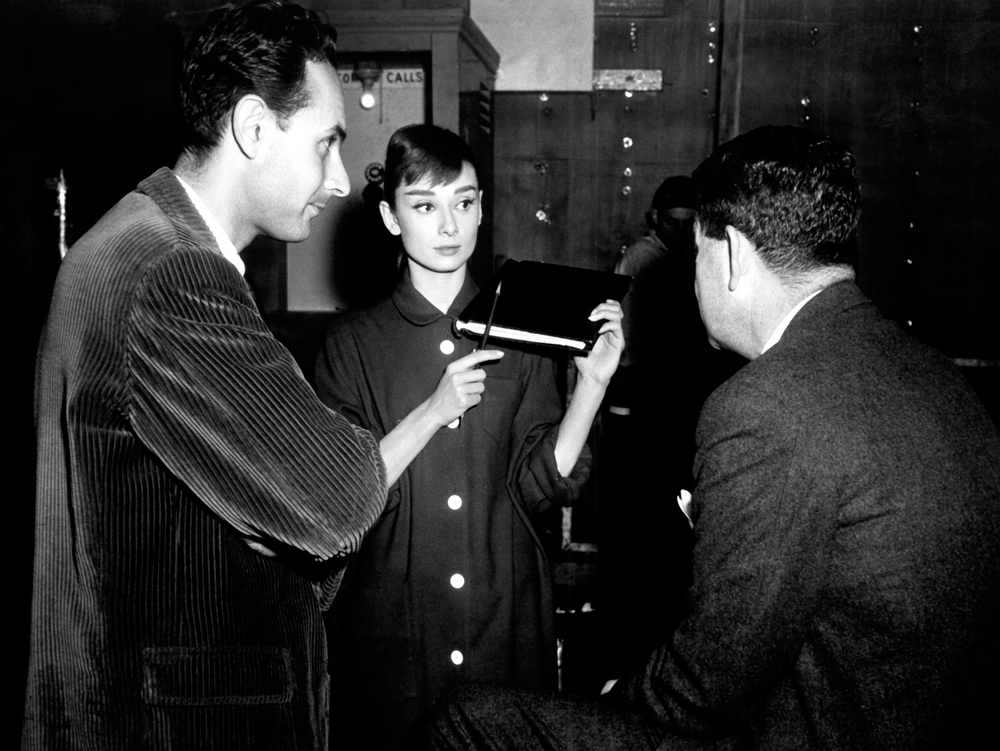
Director Stanley Donen and Audrey Hepburn worked well together and made three very successful films—Funny Face (1957), Charade (1963), and Two for the Road (1967).

“When I finally say I love you to any man and really mean it, it will be like a defeated general who’s lost all his troops, surrendering and handing his sword to the enemy.”
—AUDREY HEPBURN AS NATASHA IN WAR AND PEACE

“She has the ideal face and figure, with her long, slim body and swanlike neck. It’s a real pleasure to make clothes for her.”
—HERBERT DE GIVENCHY

Audrey and William Holden both owed Paramount Pictures one movie to fulfill their contracts, so the movie company whipped up a confection called Paris When It Sizzles, adapted from a French farce by Breakfast at Tiffany’s George Axelrod. Though filmed in 1962, it was not released until 1964, and neither the public nor critics were very complimentary about the film; Stanley Kauffmann, in New Republic, wrote “Contributions are in order from admirers of Audrey Hepburn to buy and suppress all copies of Paris When It Sizzles.”
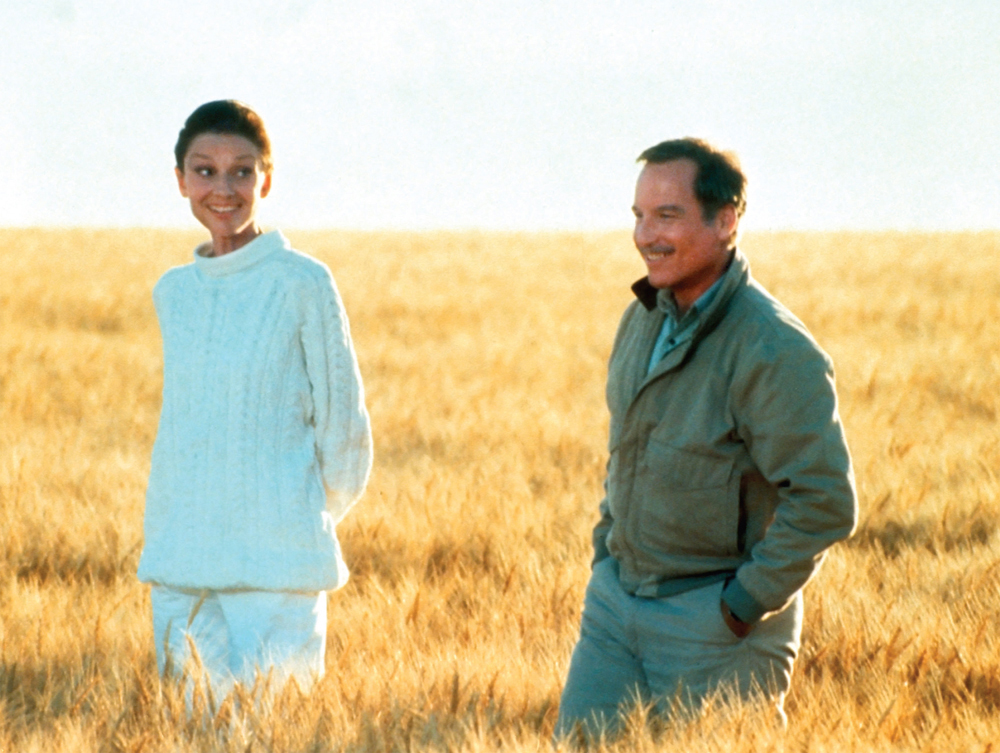
“I would say I’m a spirit more than anything. But not an extraterrestrial. No, it’s just plain old me with a sweater on.”
—HEPBURN, DESCRIBING HER ROLE AS HAP IN STEVEN SPIELBERG’S ALWAYS (1989)

In Two for the Road, Audrey wore off-the-rack items from Paris rather than couture by Givenchy. This might have helped bring prêt-à-porter to the eye of the American public.
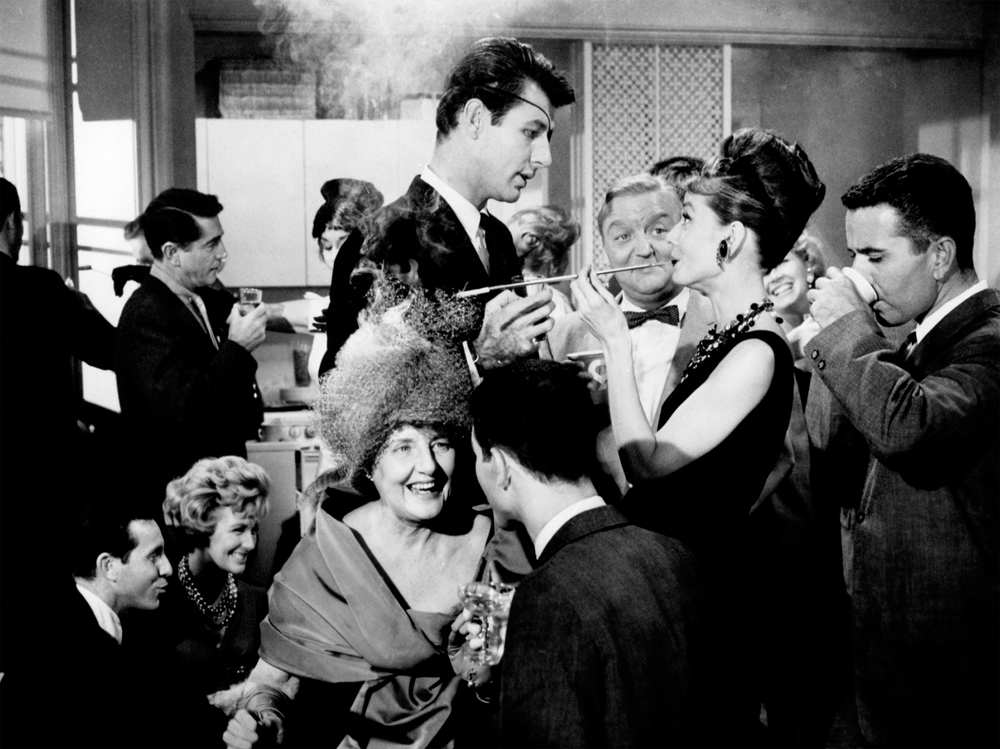
“But I am mad about José. I honestly think I would give up smoking if he asked me.”
—AUDREY AS HOLLY GOLIGHTLY IN BREAKFAST AT TIFFANY’S
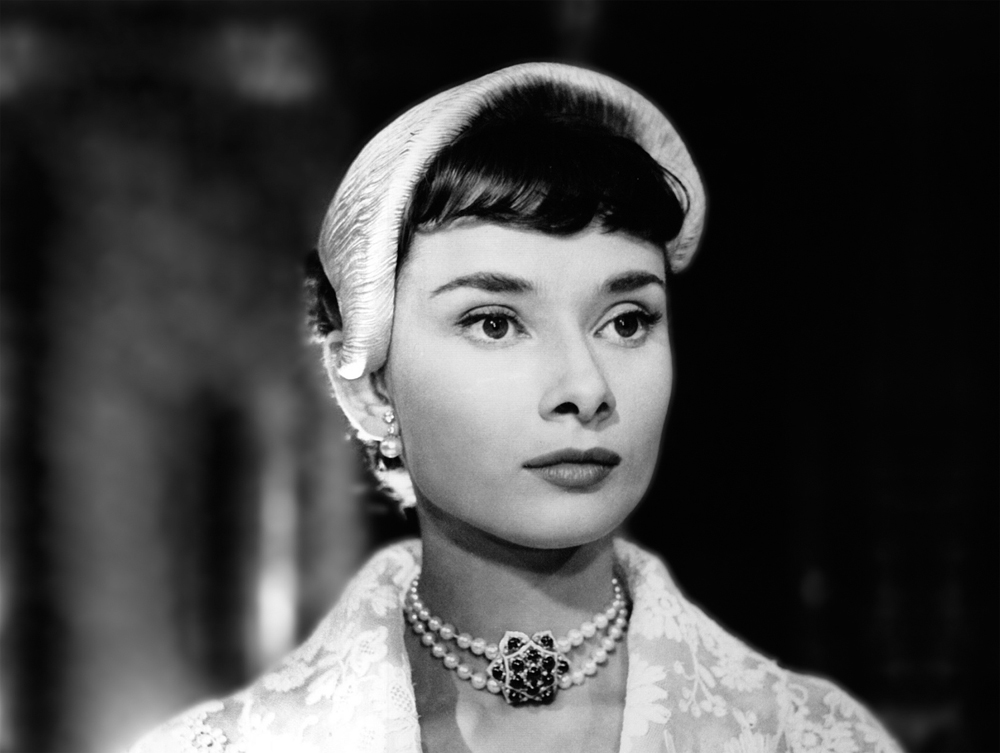
After production of Roman Holiday was completed, the studio presented Audrey with her wardrobe from the film, including her shoes, handbags, hats, and jewelry.
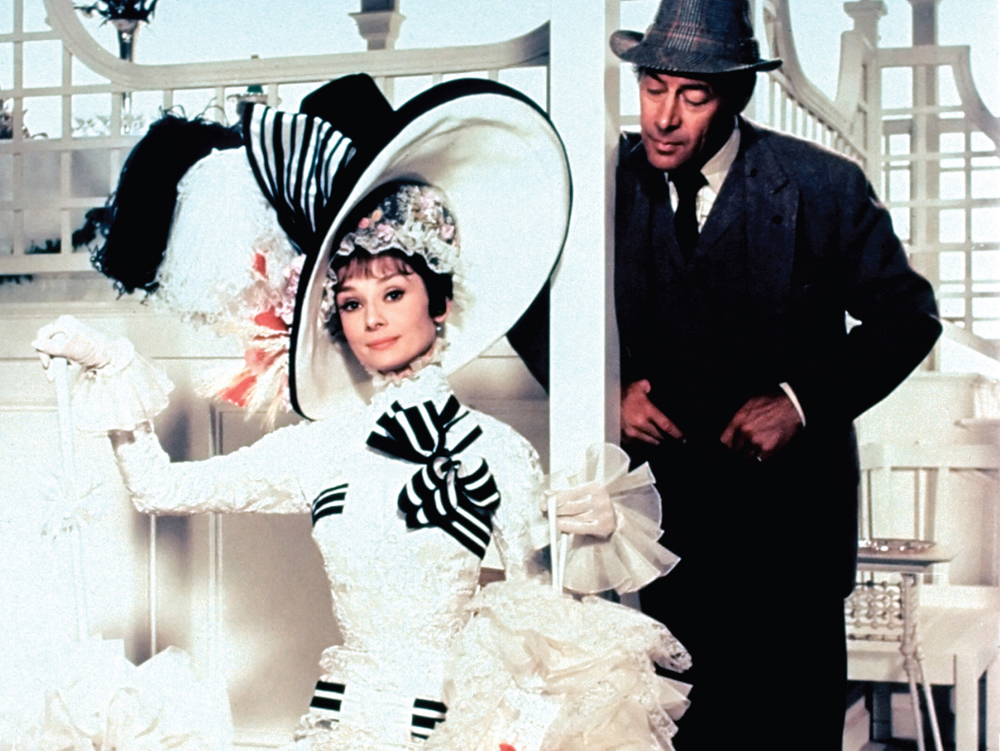
“I wanted to play Eliza more than anything in the world, but I’m glad it’s all over now. It took everything I had.”
—AUDREY HEPBURN, AFTER COMPLETION OF MY FAIR LADY

Cary Grant had been offered the Humphrey Bogart role in Sabrina but turned it down because (born in 1904) he considered himself too old to play opposite Audrey Hepburn. Bogart, five years older than Grant, didn’t consider the age gap of great concern.
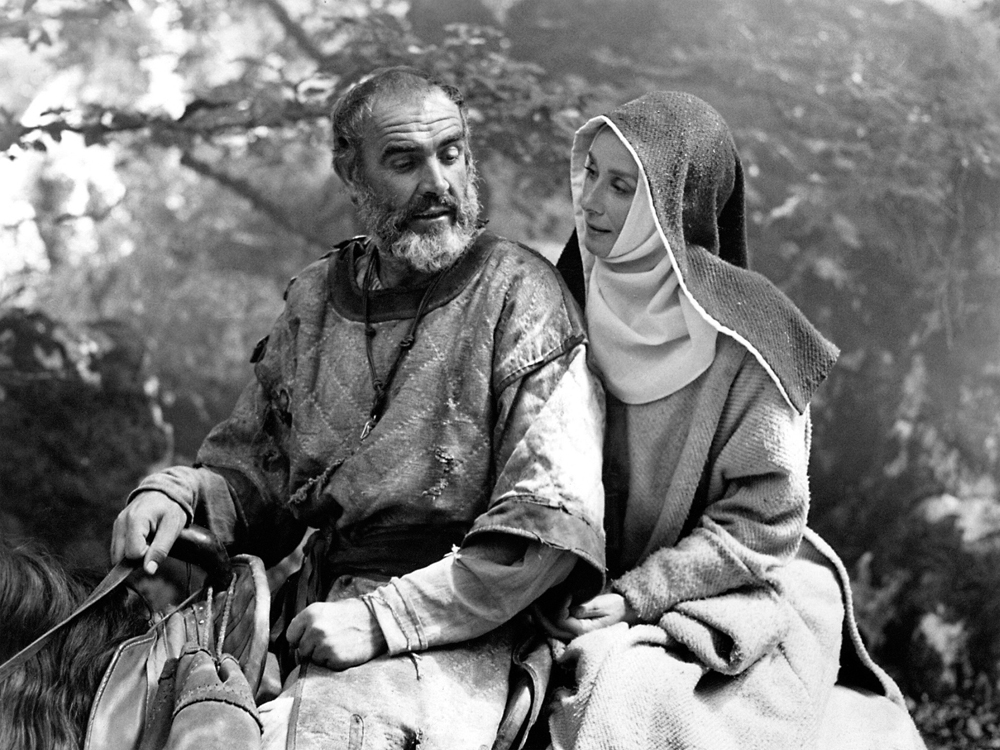
“Audrey Hepburn, possibly the only woman around who can make nun’s habit look adorable.”
—HOWARD KISSEL, WOMEN’S WEAR DAILY, ABOUT AUDREY’S SECOND OUTING AS A NUN, IN ROBIN AND MARIAN

Holly Golightly’s living-room sofa was created from a claw-foot bathtub cut lengthwise. Note the faucets on one end.

“How proud I would be, and full of love I would be, if I really had a daughter like you.”
—TELEGRAM TO AUDREY FROM MAURICE CHEVALIER ON THE FIRST DAY OF FILMING LOVE IN THE AFTERNOON, IN WHICH SHE PLAYED HIS DAUGHTER
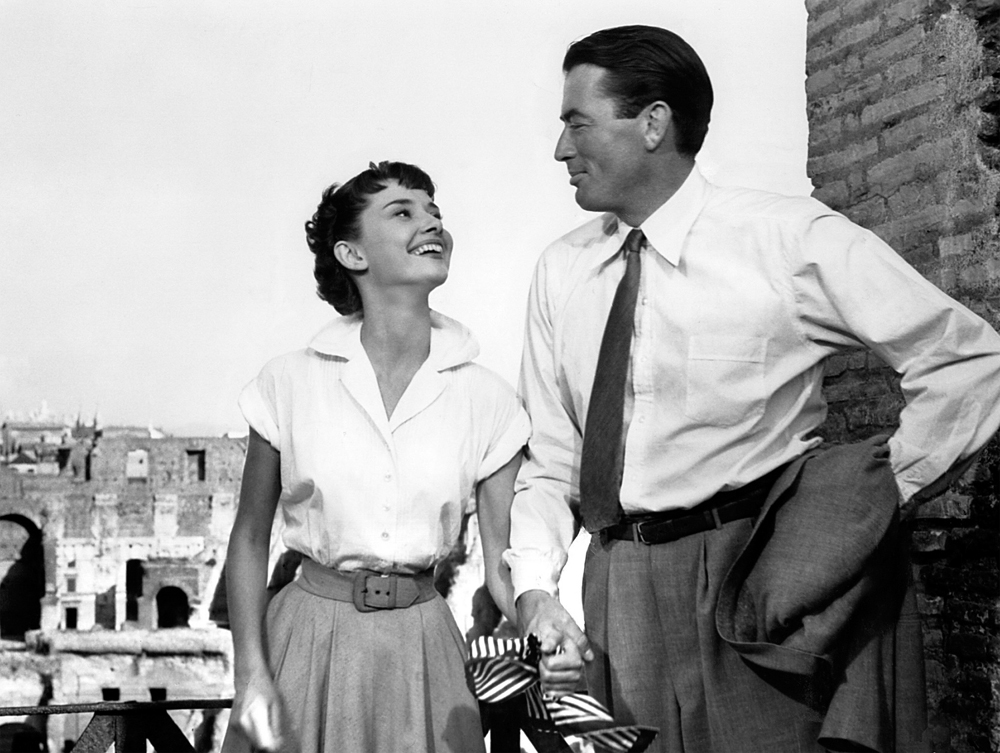
Roman Holiday was the first American film to be shot entirely in Italy. The movie was shot in black-and-white so that the scenery didn’t overwhelm the viewer and detract from the actors.

“I’m not worth it. It’s impossible. Please don’t tell anyone.”
—AUDREY HEPBURN TO HER AGENT AFTER LEARNING THAT HER $350,000 SALARY FOR WAR AND PEACE WAS A RECORD HIGH FOR AN ACTRESS

Audrey’s costar in The Unforgiven, screen veteran Lillian Gish proved herself an expert marksman, having learned to shoot from an ex-bank robber early in her career. In fact, she was a better shot than either director John Huston or costar Burt Lancaster, who offered to teach her.
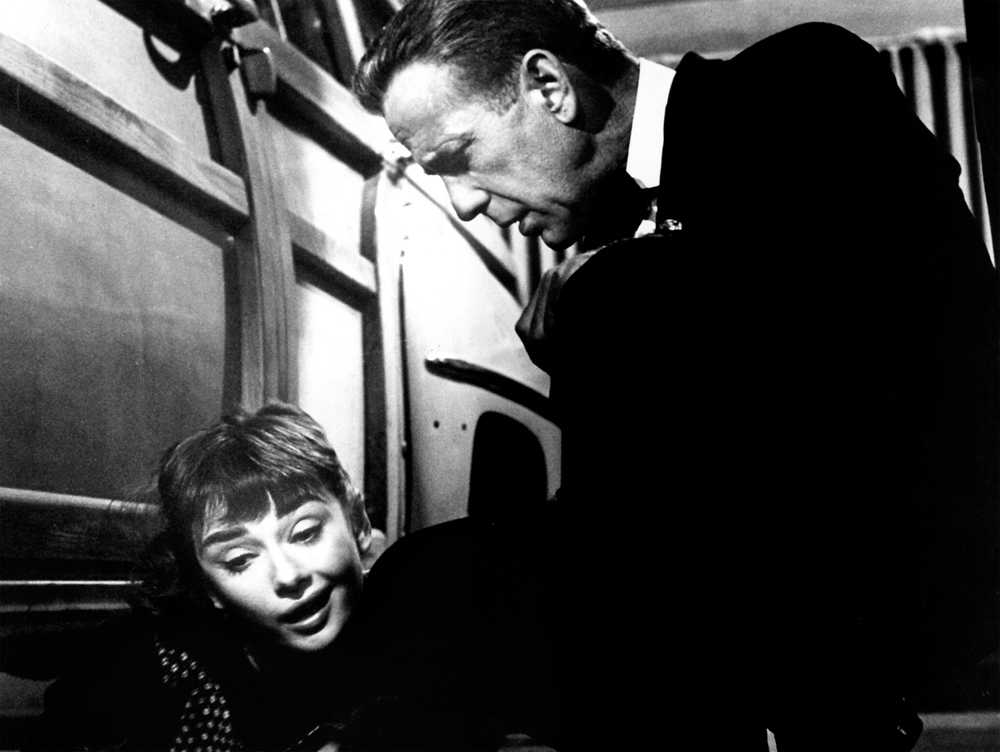
For Sabrina, director Billy Wilder once asked Hepburn to feign illness so that he could continue working on a script segment and not film it as it was. Audrey complied.
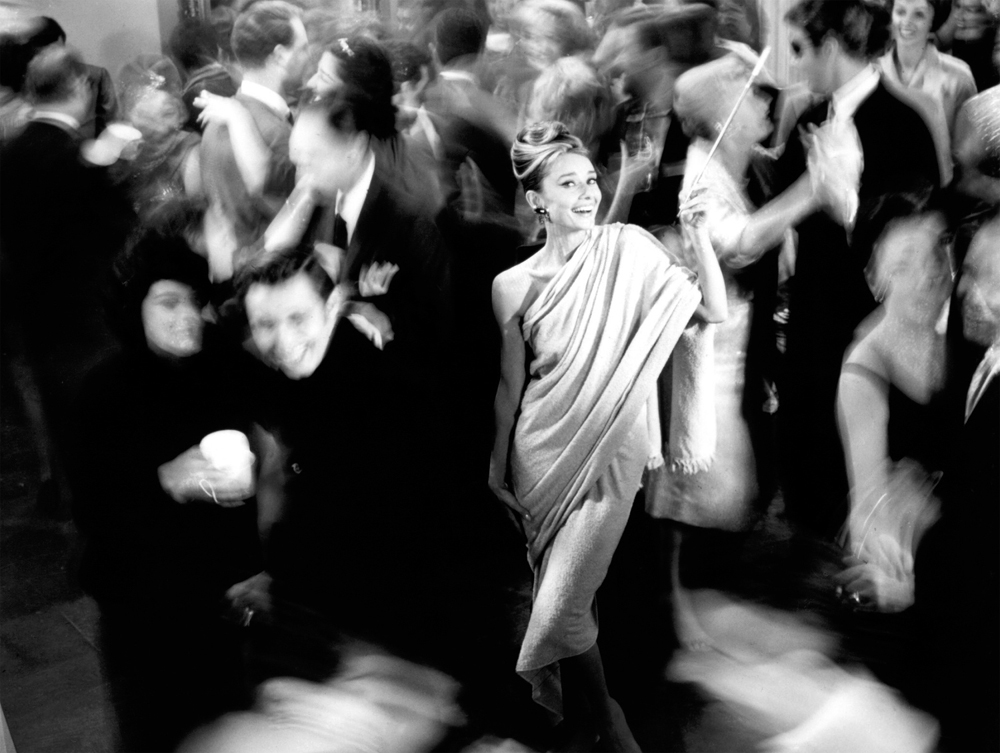
While the movie never explains why Holly is wearing a toga-like towel ensemble at a fête in her apartment, a part of Breakfast at Tiffany’s that ended up on the cutting-room floor showed her taking a bath when she remembers that she had invited people over for a party.

“I know I have more sex appeal on the tip of my nose than many women have in their whole bodies.”
—AUDREY HEPBURN
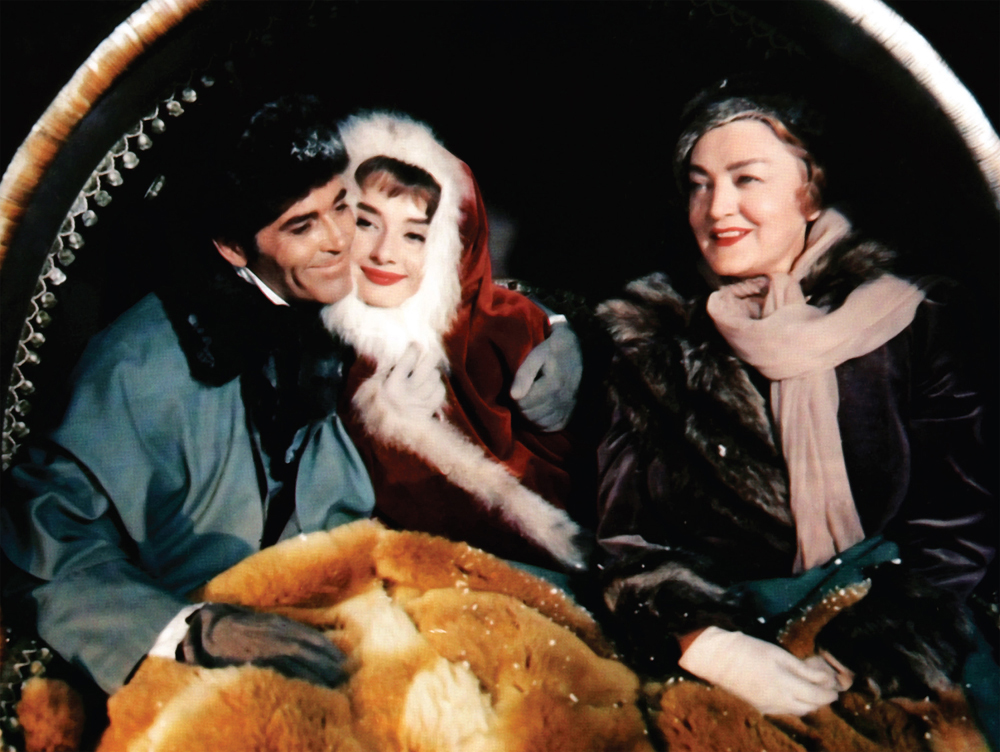
“I must say that Audrey will be the ideal daughter-in-law. She is such a delicious person, a dream. The age difference doesn’t matter.”
—SIGNORA PAOLA ROBERTI BANDINI, ANDREA DOTTI’S MOTHER, ABOUT HER THIRTY-YEAR-OLD SON’S UPCOMING MARRIAGE TO THIRTY-NINE-YEAR-OLD AUDREY
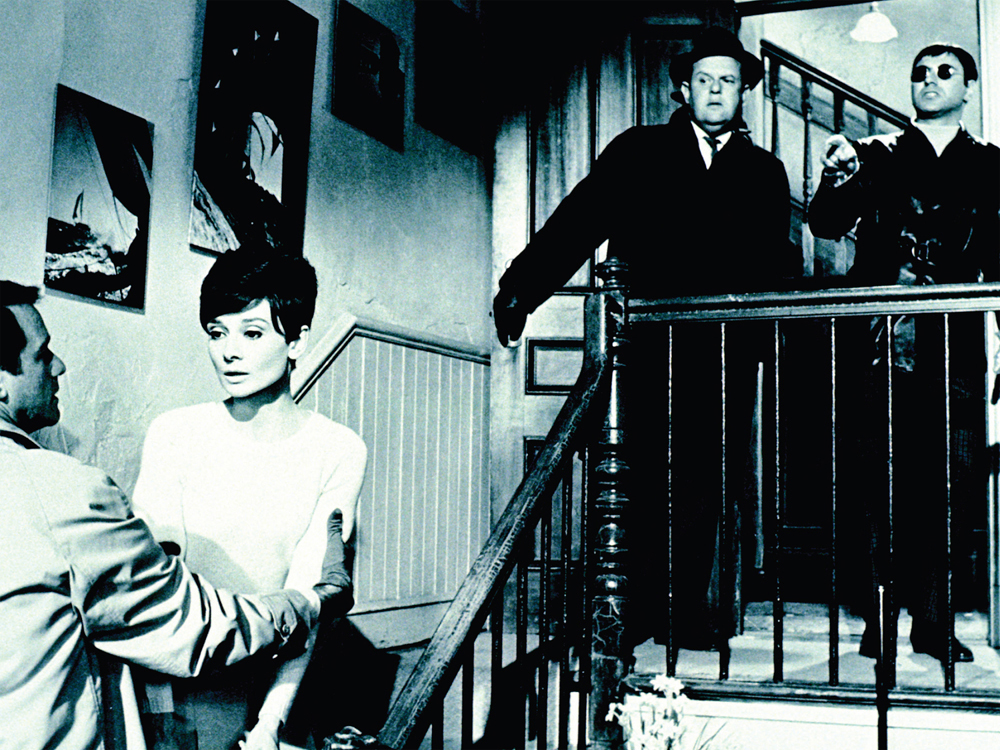
Though Audrey got an Oscar nomination for her performance in Wait until Dark, the award that year went to that other Hepburn—Katharine—for Guess Who’s Coming to Dinner?
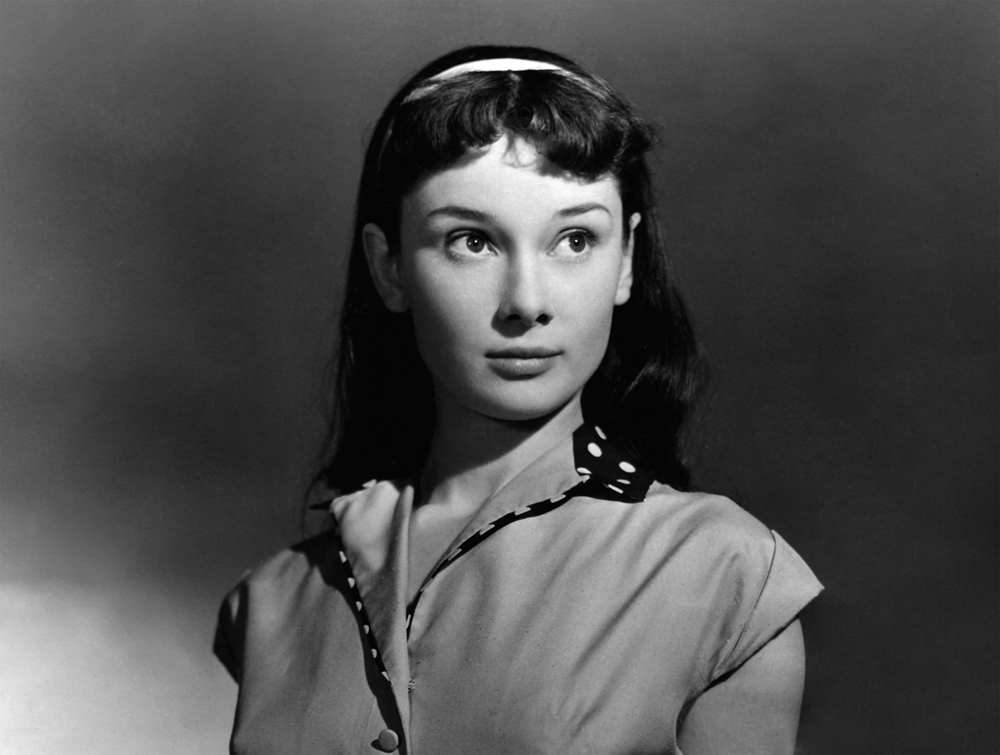
Most of Audrey’s role as a hotel receptionist in the 1951 Coronet film One Wild Oat was cut due to the censor’s objection to “objectionable” double entendres.
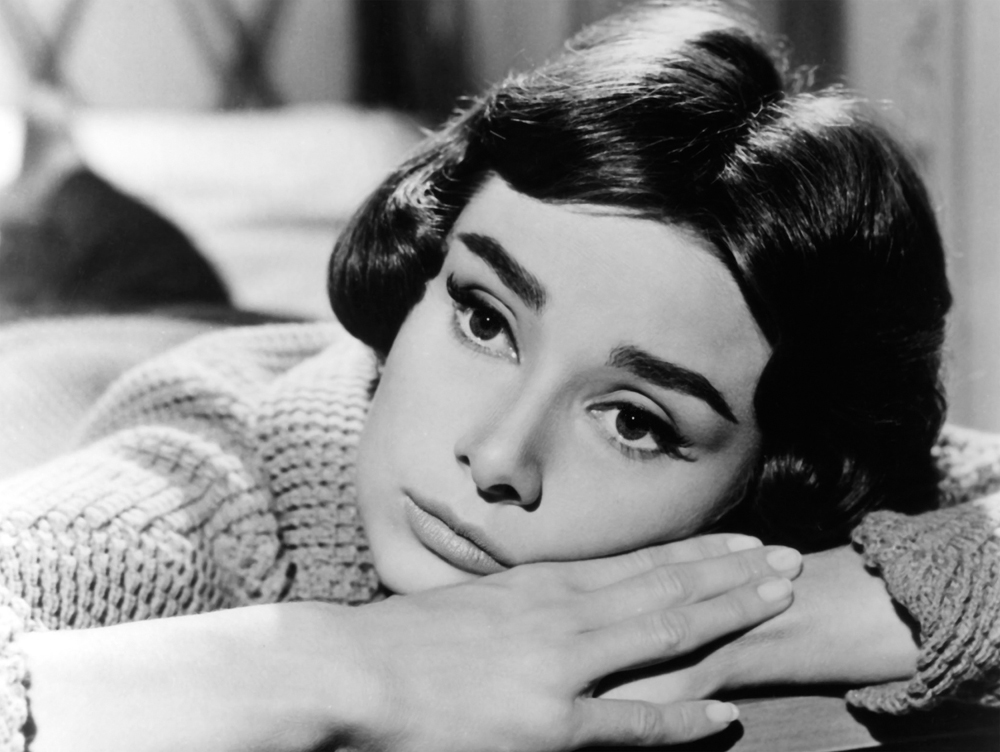
“Success is like reaching an important birthday and finding out you’re exactly the same.”
—AUDREY HEPBURN, 1954
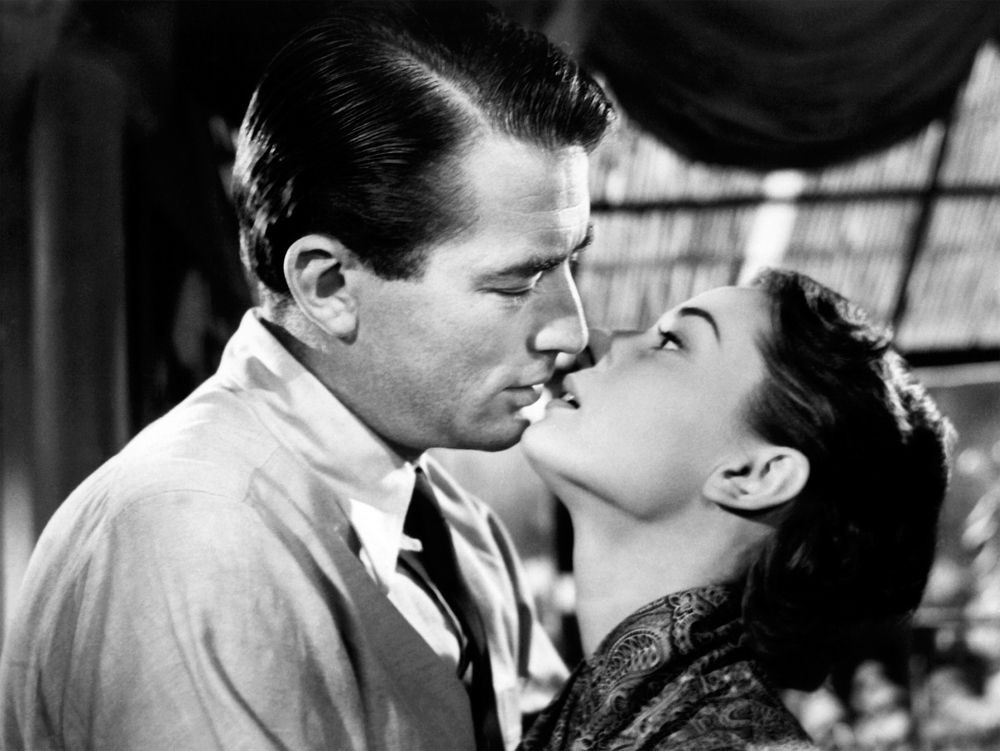
“The time will come when I can afford the luxury of a husband. Just now, I haven’t got the time.”
—AUDREY, 1952, AFTER SHE AND FIANCÉ JAMES HANSON BROKE OFF THEIR ENGAGEMENT
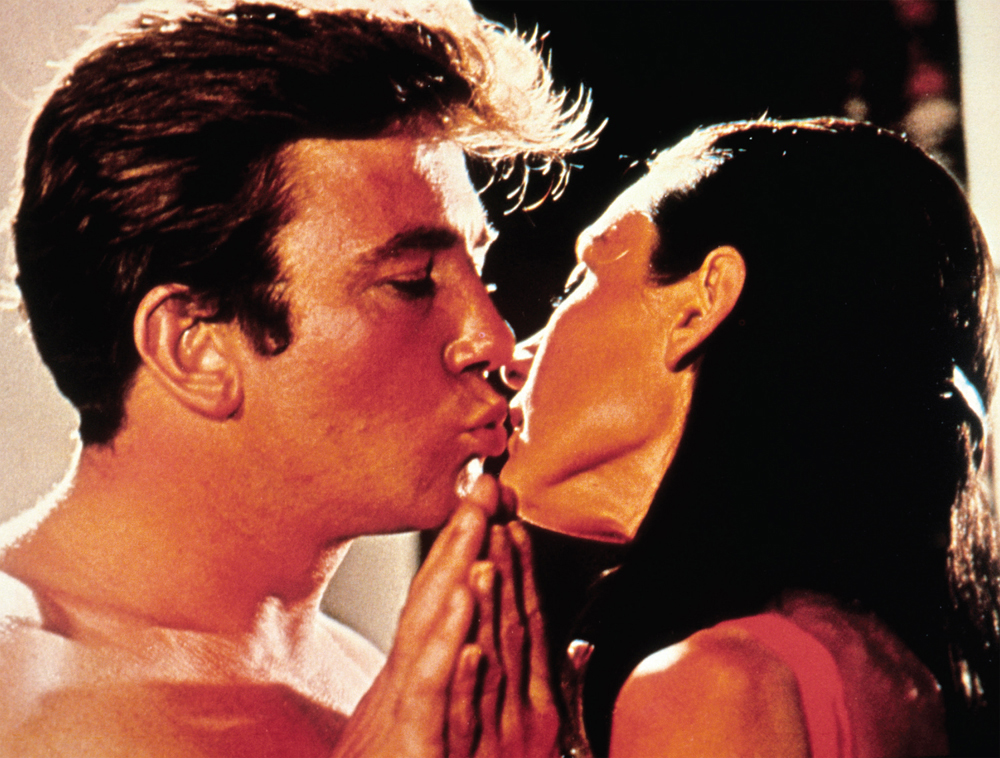
“Every girl is looking for love, whether she admits it or not, and when she finds it, her joy is greater than she can express.”
—AUDREY HEPBURN, IN A 1963 MAGAZINE INTERVIEW

In the slapstick British farce Young Wives’ Tales (1951), Audrey played the kooky Eve Lester, a young single boarder who—due to World War II conditions in England—is forced to share a small house with a variety of characters including two married couples. Though it was made before Roman Holiday, this film was released after Audrey’s first star turn.
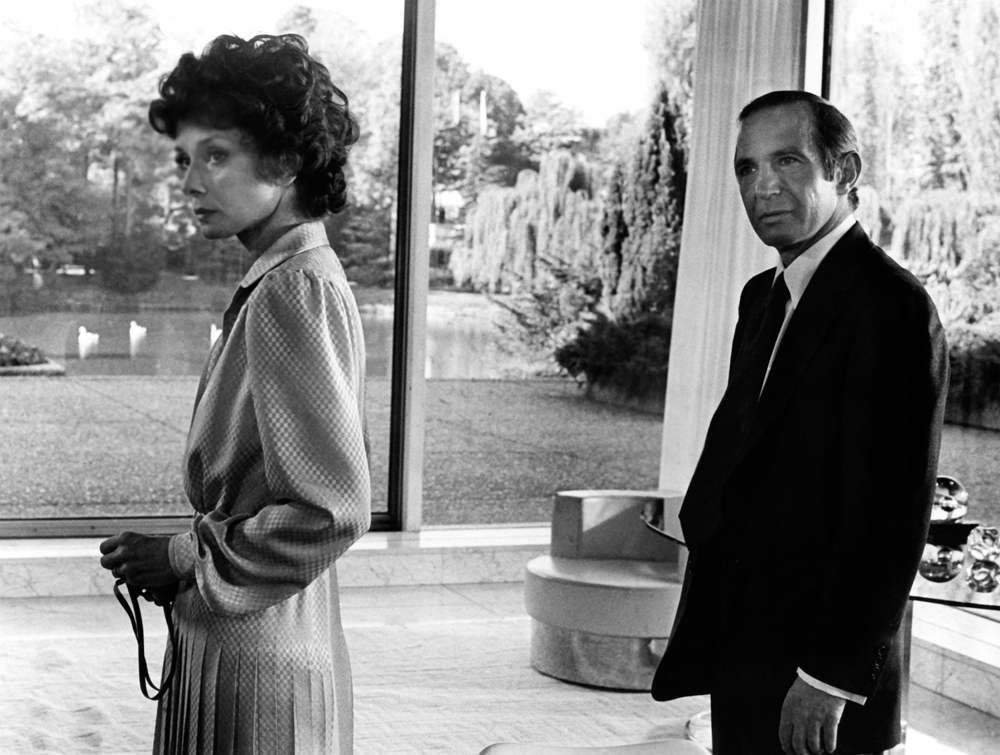
Audrey, shown here with Ben Gazzara, played an heiress in danger in the international potboiler Sidney Sheldon’s Bloodline
(1979).
To get Ms. Hepburn to accept the part, the director upped the age of the twenty-something character to thirty-five.
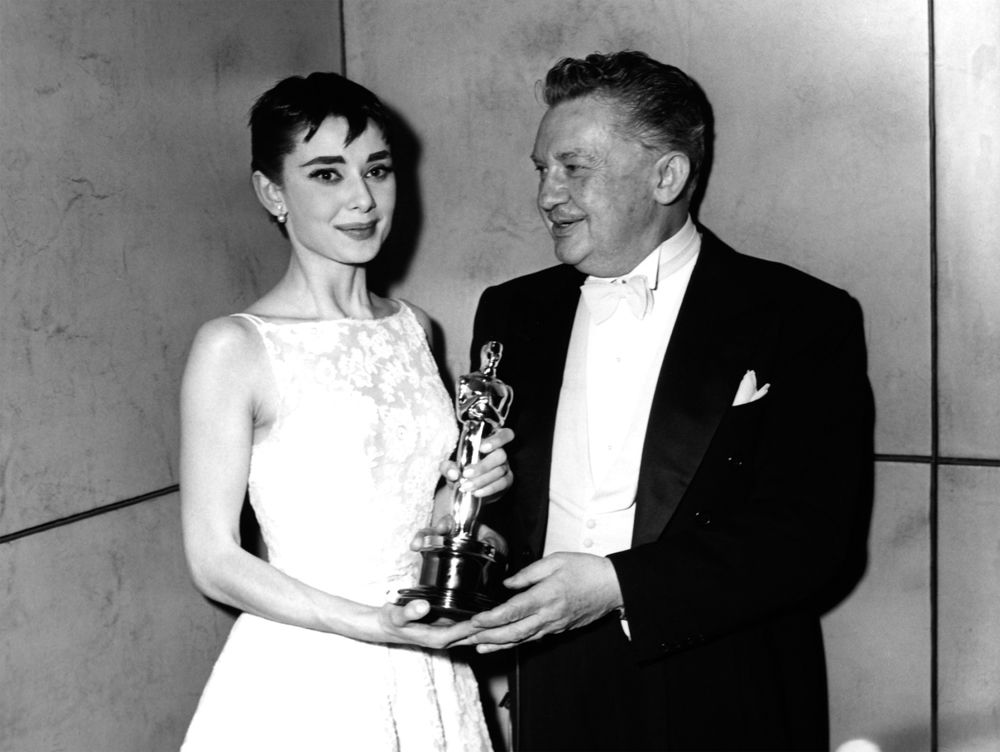
Audrey posed with her Oscar presenter Jean Hersholt after winning the best actress award for her role in Roman Holiday (1954). Almost thirty years later, Hepburn would go on to win the Jean Hersholt Humanitarian Award, given by the Academy to an “individual in the motion picture industry whose humanitarian efforts have brought credit to the industry.”

“After so many drive-in waitresses becoming movie stars, there has been this real drought, when along came class; somebody who actually went to school, can spell, maybe even plays the piano.”
—BILLY WILDER
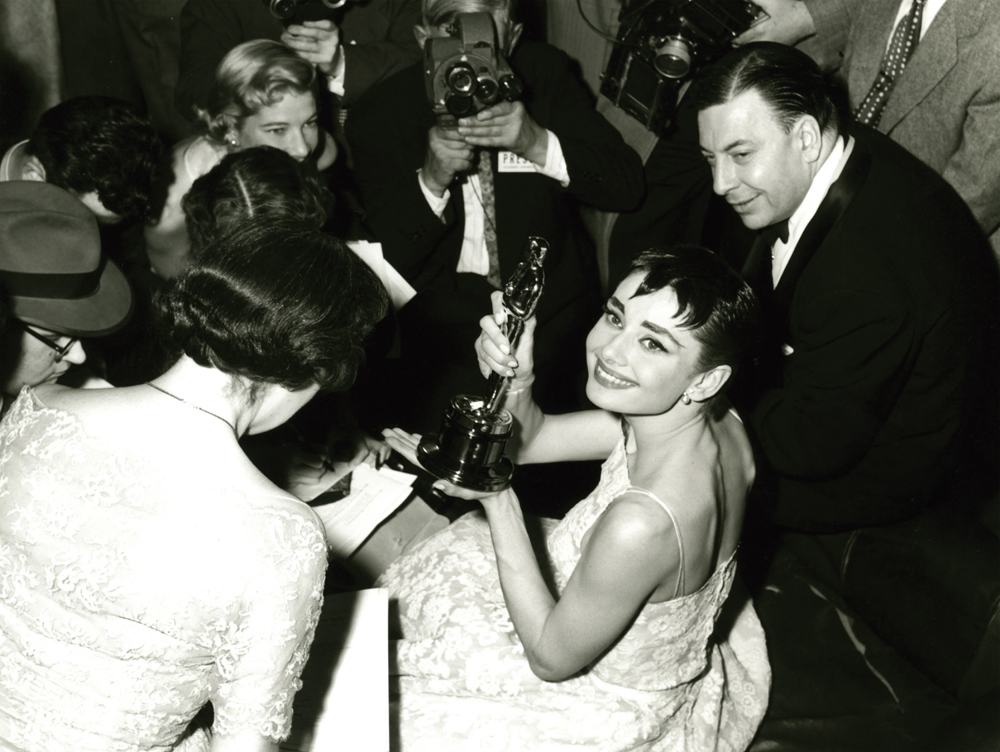
Audrey is one of nine people who has won an Oscar, a Tony, a Grammy, and an Emmy. She got an Oscar in 1953 for Roman Holiday, a Tony in 1954 for Ondine, an Emmy in 1993 for her educational miniseries Gardens of the World with Audrey Hepburn, and a Grammy in 1994 for Audrey Hepburn’s Enchanted Tales, which won in the best spoken-word album for children category.
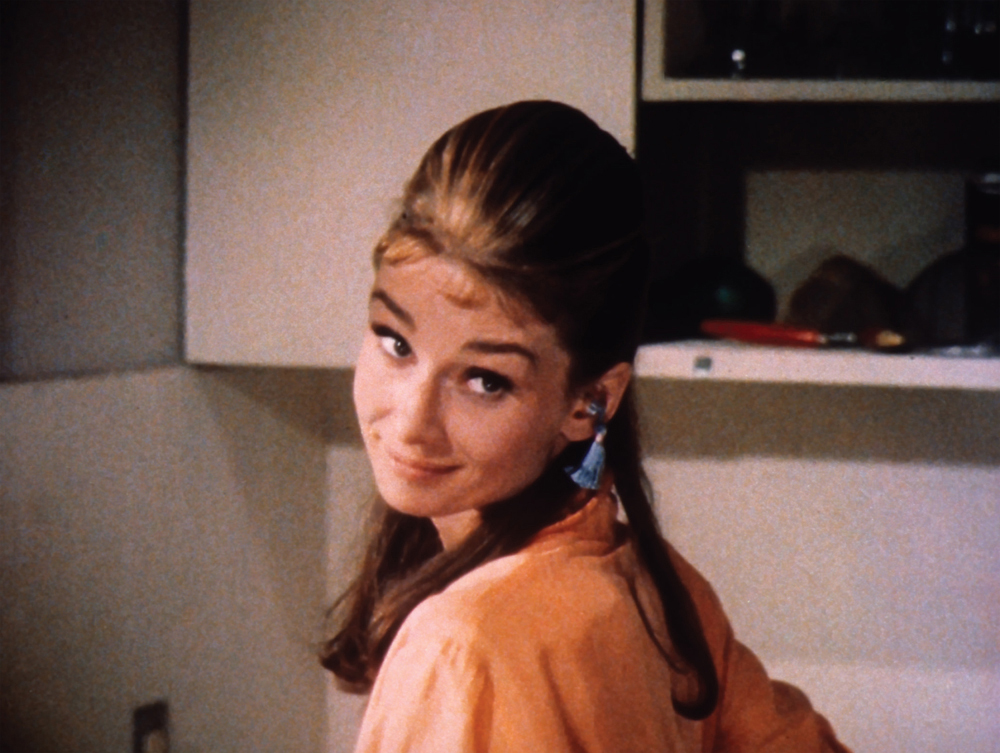
“She still had qualms about playing the role until I said that it was not a lady of the evening that we sought but a lopsided romantic, a dreamer of dreams.”
—MARTIN JUROW, PRODUCER OF BREAKFAST AT TIFFANY’S, WHO HELPED CONVINCE AUDREY TO TAKE THE ROLE OF HOLLY GOLIGHTLY
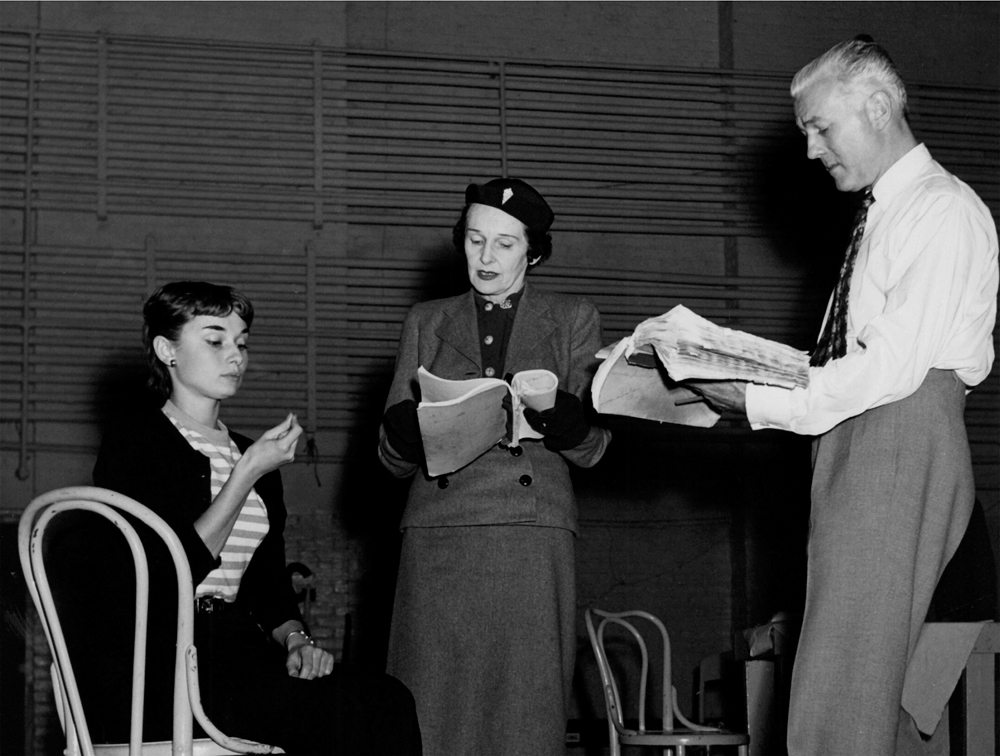
Because French director Raymond Rouleau (shown here with Audrey and Cathleen Nesbitt) wasn’t fluent in English and the rest of the cast was bilingual, playwright Anita Loos translated the script for the play Gigi into French for rehearsals before it was adapted back into English; this required the cast to learn two separate versions along with different phrasing and intonation.

“I depend on Givenchy in the same way that American women depend on their psychiatrists.”
—AUDREY HEPBURN

George Cukor directed Audrey in the musical My Fair Lady; despite its London setting, the entire film was shot on the Warner Brother Studio lots of Burbank, California. The director agreed to schedule the scenes in their actual order so that Audrey could grow into the role.
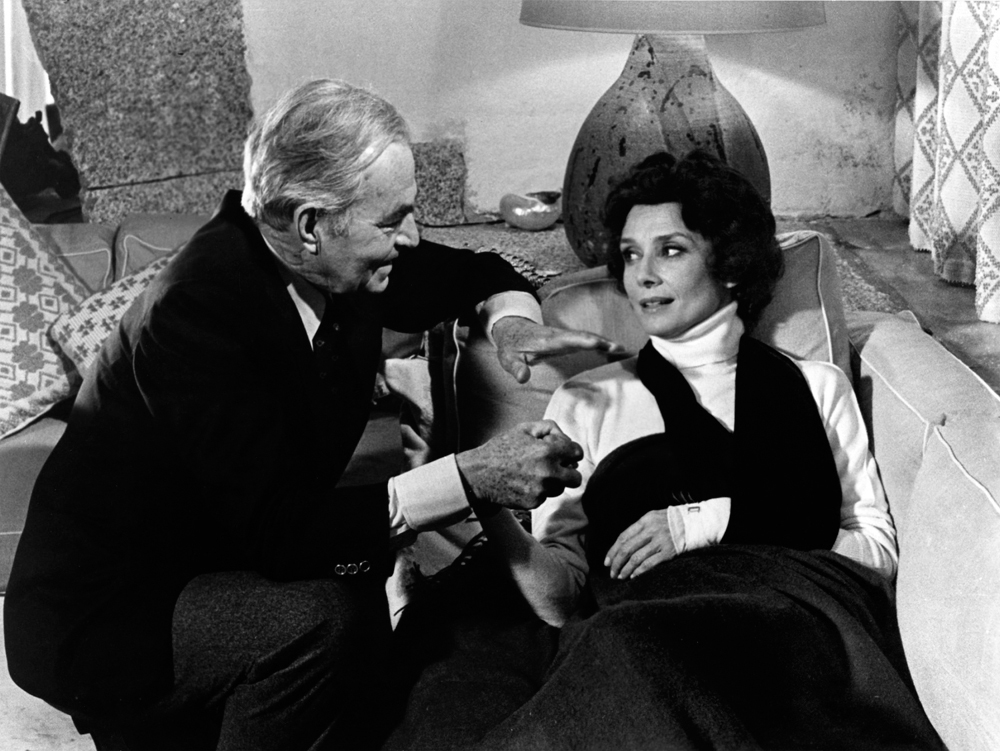
“It’s a shock to see Audrey Hepburn playing a role that even Raquel Welch would have had the good sense to turn down.”
—DAILY VARIETY, ABOUT HER PERFORMANCE IN SIDNEY SHELDON’S BLOODLINE
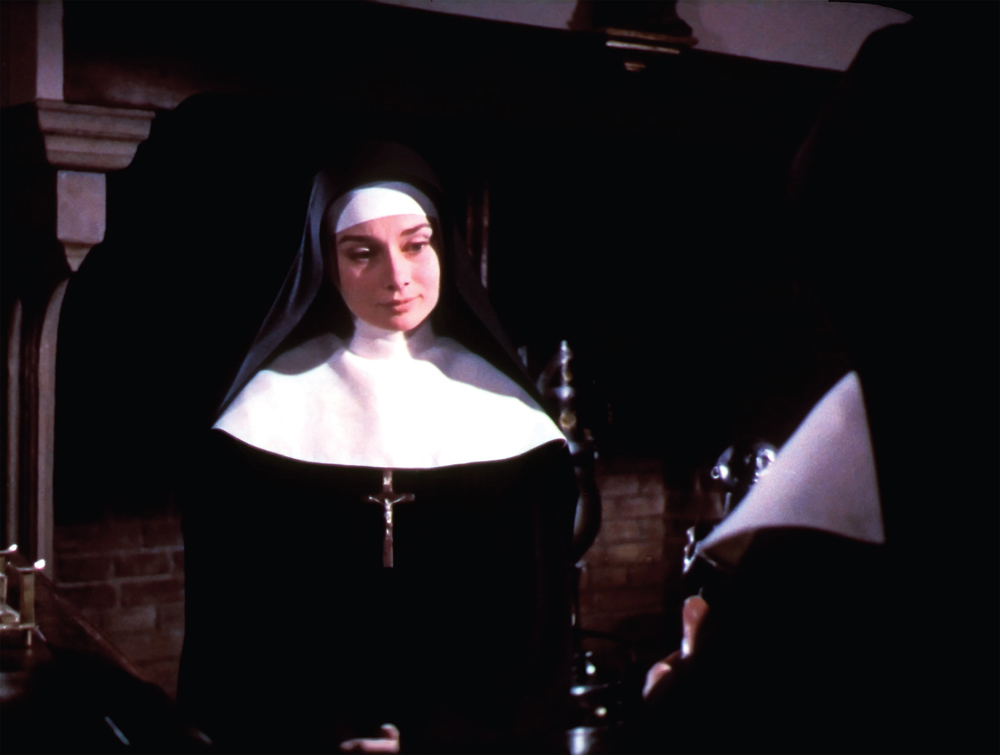
While, of course, Hubert de Givenchy did not design the costumes for The Nun’s Story (this duty was relegated to the Warner Brothers costume department), Audrey had all the costume sketches shipped to him in Paris, and he later oversaw her fittings.
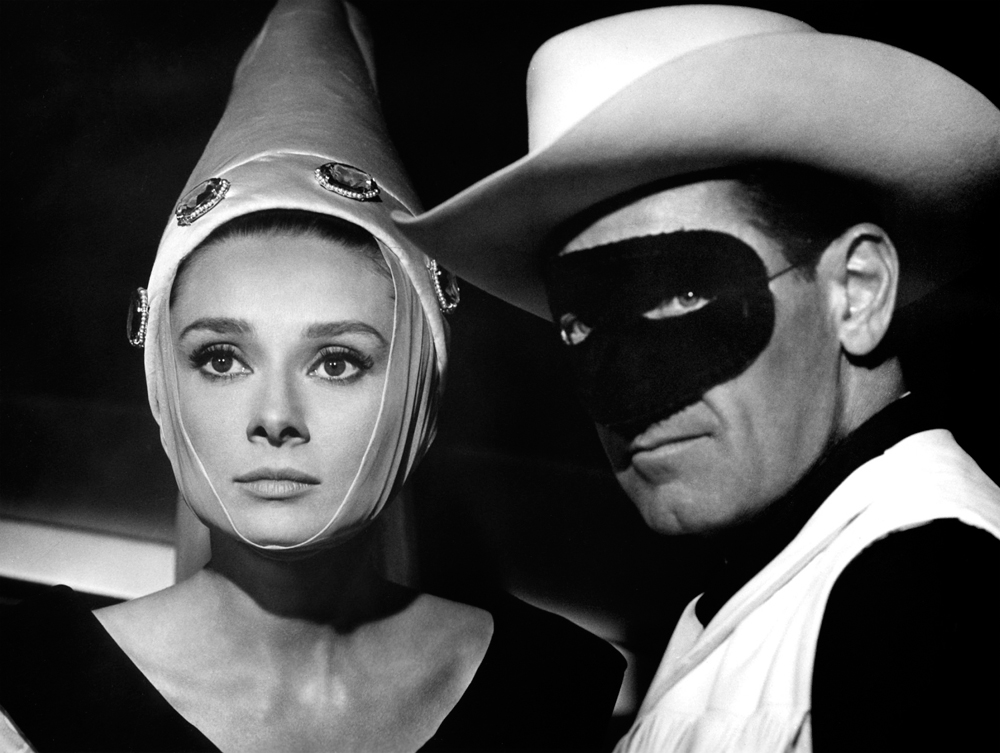
“I never think of myself as an icon. What is in other people’s minds is not in my mind. I just do my thing.”
—AUDREY HEPBURN
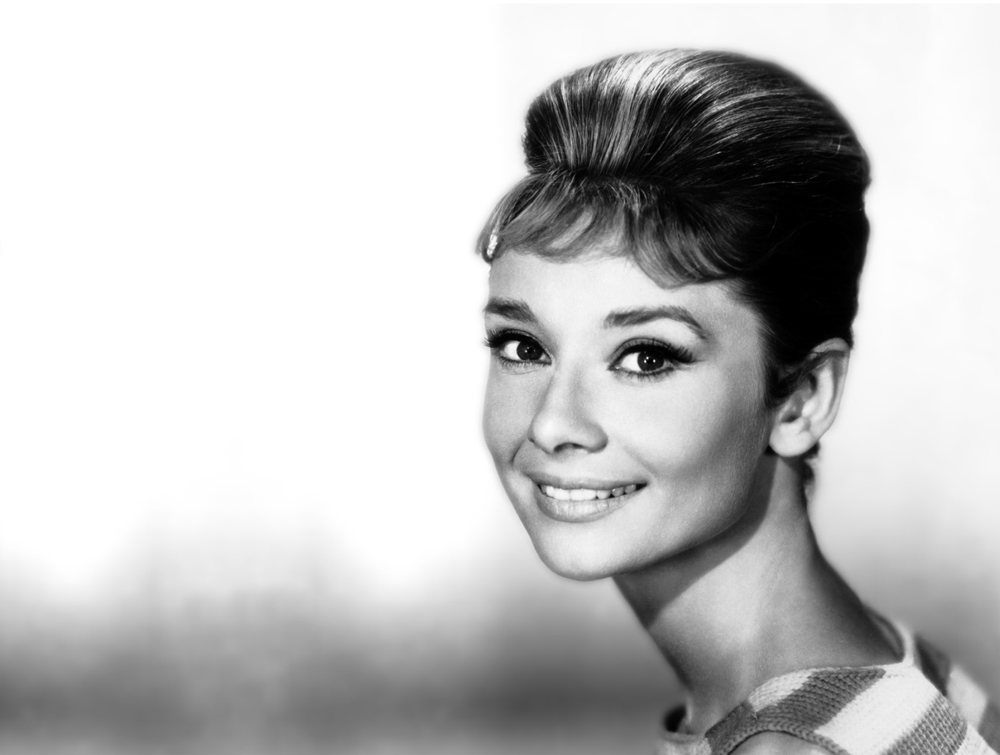
The daughter of a British banker and a Dutch baroness, Audrey Kathleen Ruston was born on May 4, 1929, in Ixelle, Belgium. Her original birth certificate was handwritten, leading certain parties to surmise incorrectly that the u in Audrey was actually an n, and that her name was originally Andrey, the feminine form of Andrew.
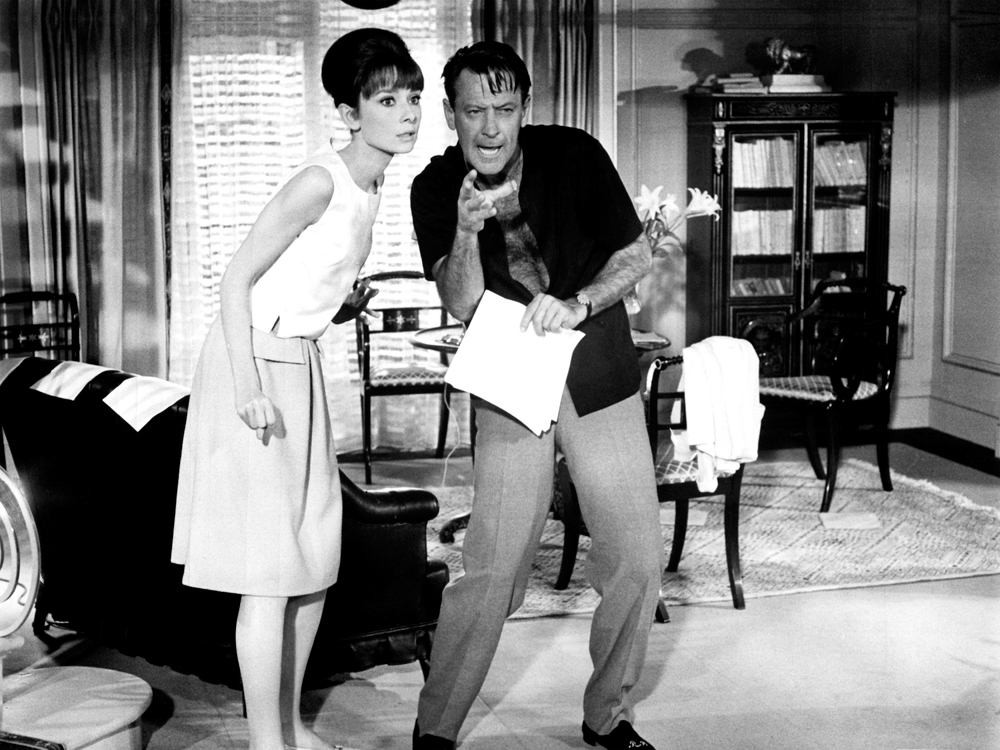
“I realized I had to face Audrey and I had to deal with my drinking—and I didn’t think I could handle either situation.”
—WILLIAM HOLDEN, ABOUT ARRIVING ON LOCATION TO FILM PARIS WHEN IT SIZZLES
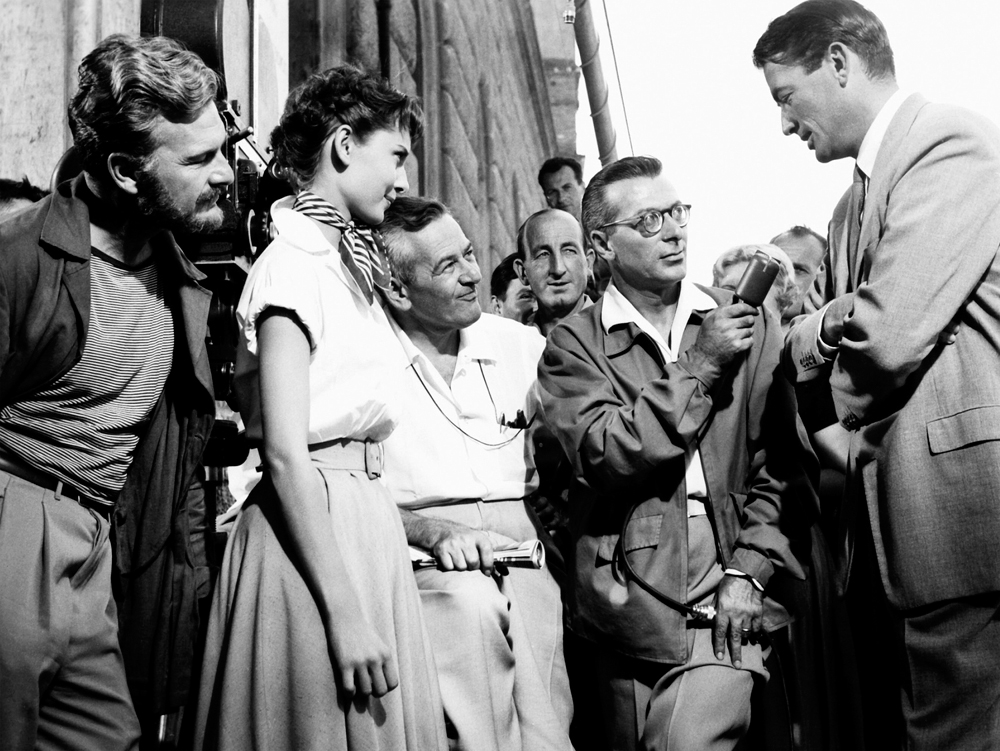
William Wyler, the director of Roman Holiday, started out directing low-budget Westerns. This romantic Hepburn-Peck vehicle, his first comedy in twenty years, won him an Oscar for Best Director.
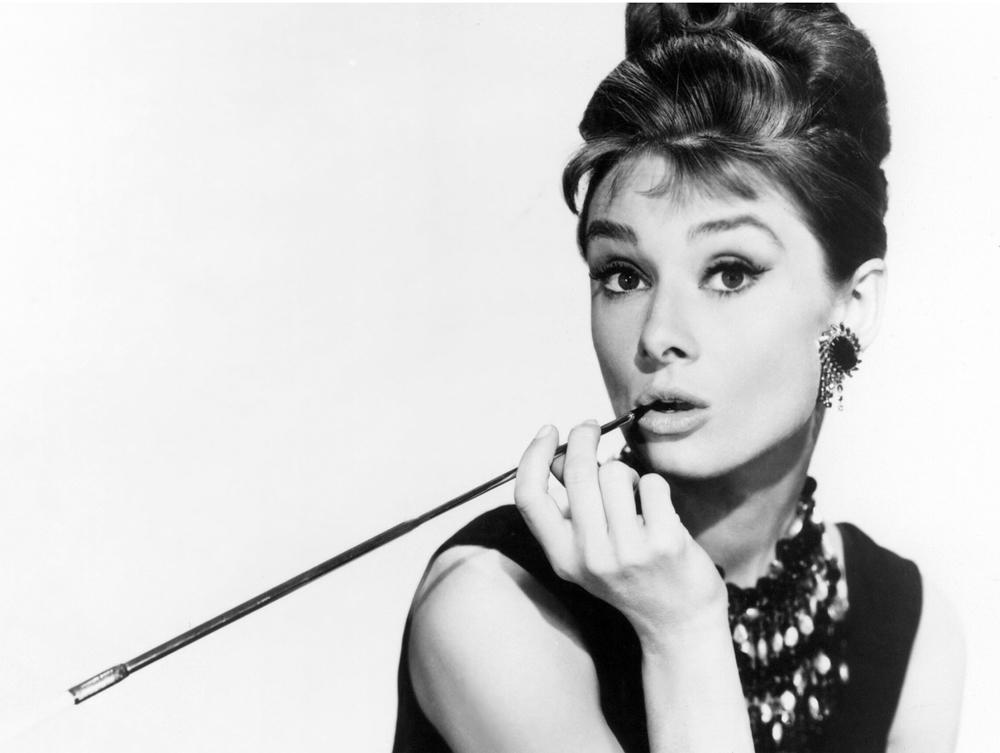
“Son image était unique. C’est une chose qu’aucune autre des grandes actrices a été incapable de créer elle-même.” (“Her image was unique. It’s something that no other great actress was able to create for herself.”)
—HUBERT DE GIVENCHY
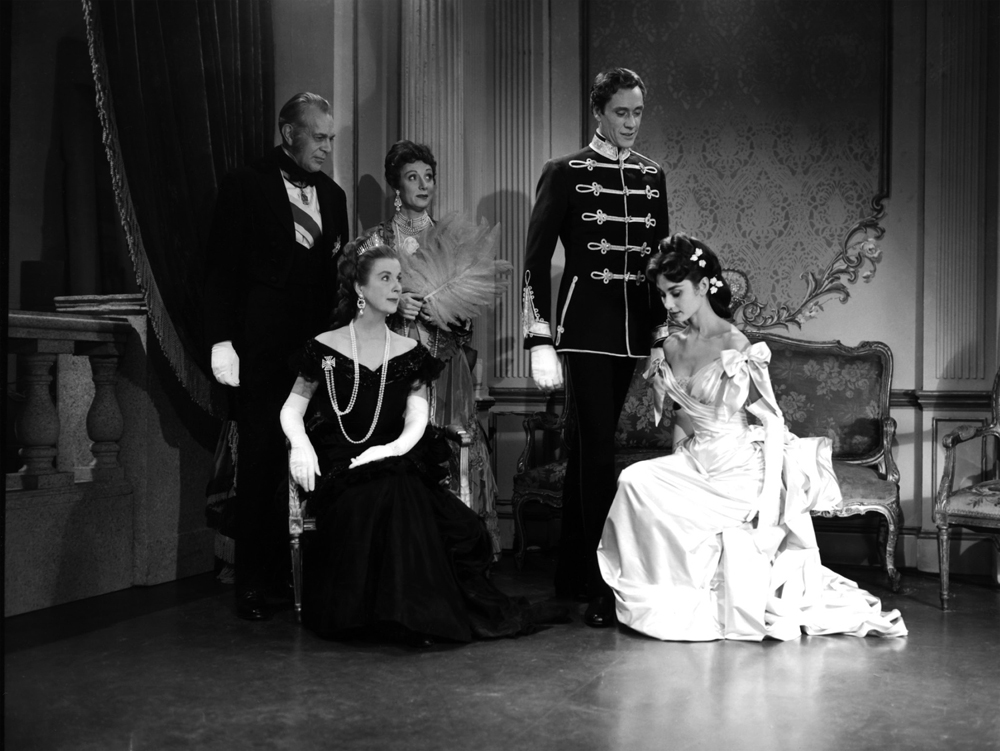
Audrey’s television debut, Mayerling (1957) was based on the true story of Crown Prince Rudolf of Austria and his mistress Marie Vetsera, who were found dead at their lovers’ hideaway.

“Anyone who doesn’t believe in miracles isn’t a realist. UNICEF performs realistic miracles every day.”
—AUDREY HEPBURN
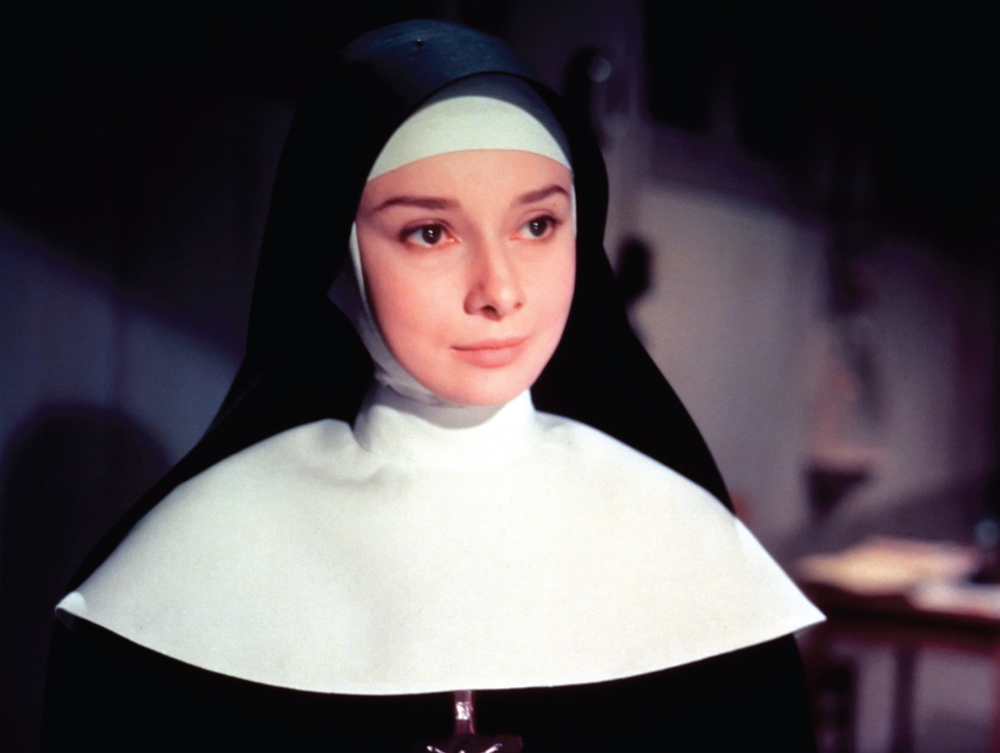
Audrey was very eager to play Sister Luke in The Nun’s Story because she was fervent to make the transition from her typical ingenue roles to something that would prove her ability to be a serious dramatic actress.
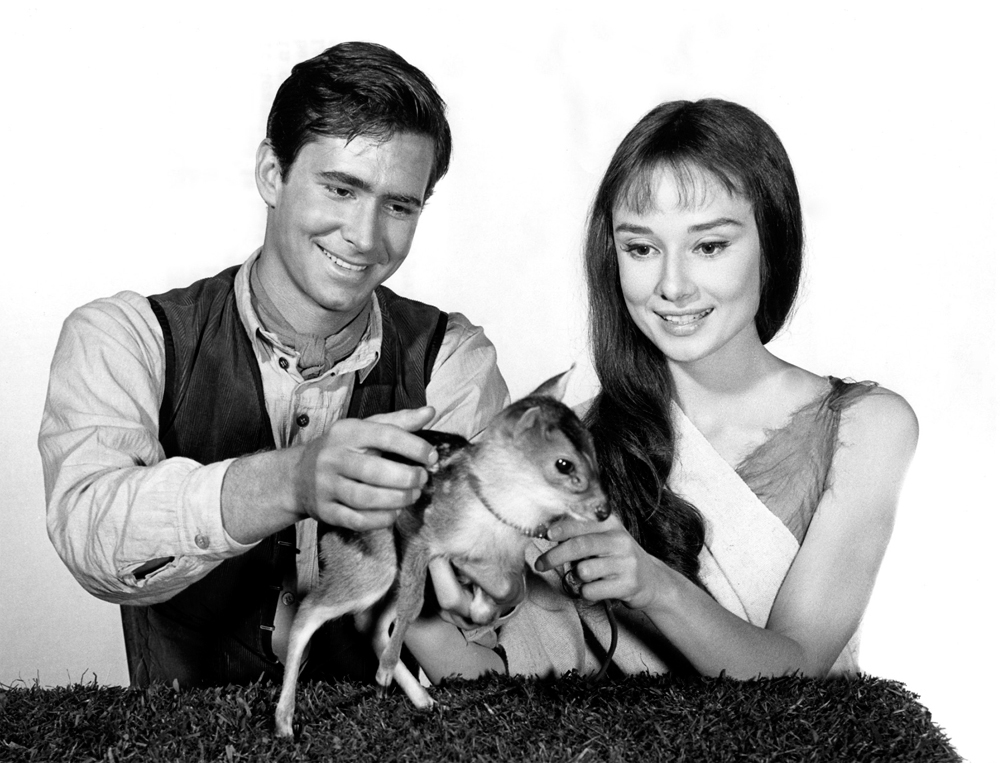
While filming Green Mansions, Audrey adopted her costar, Ip the fawn, in order to properly bond with the animal.
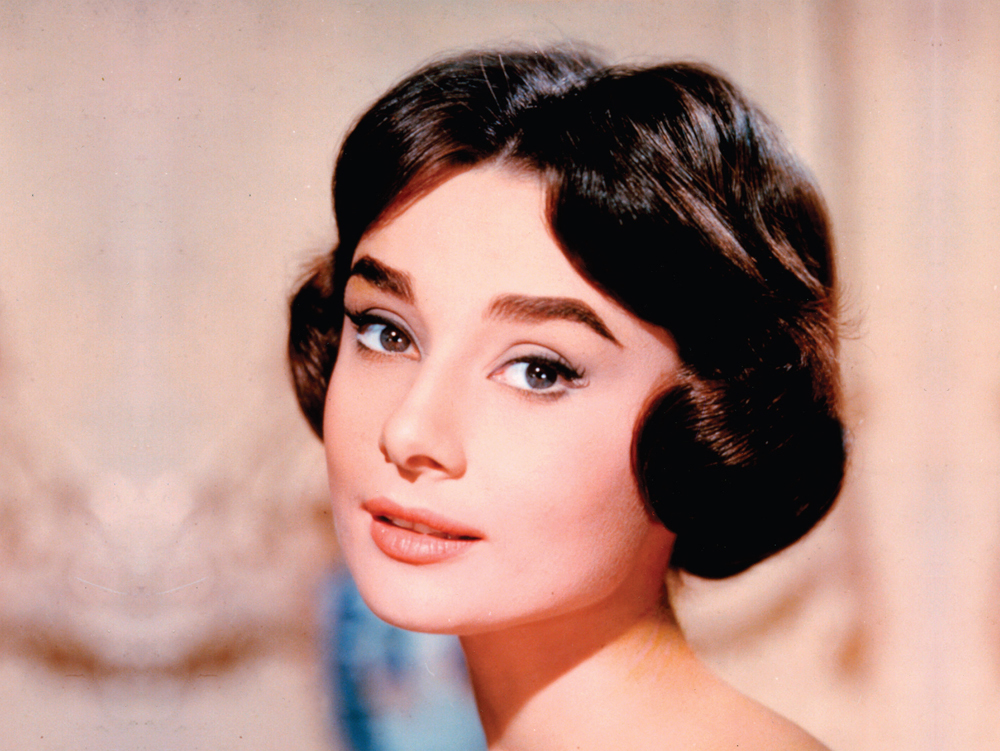
“When she burst on the world in Roman Holiday in 1953, she seemed a total original. Her beauty was more gamine than classic, with large expressive eyes, sculpted cheekbones, lips quick to smile, the graceful neck of a swan.”
—WRITER WARREN G. HARRIS
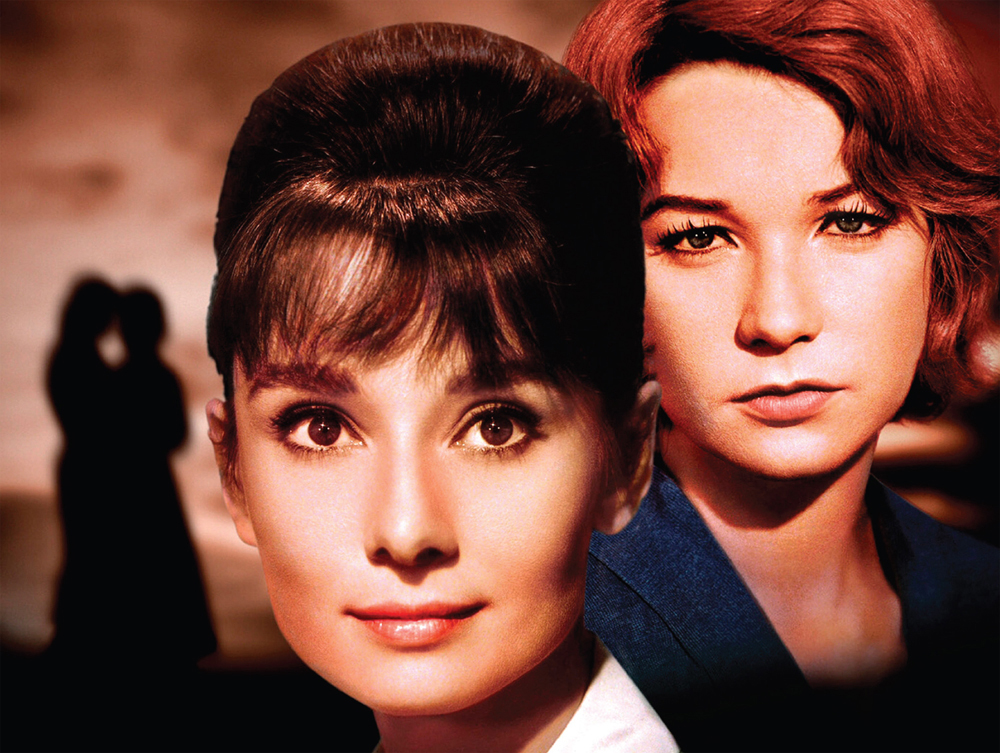
“I had plenty of qualms about working with Audrey when we met for the first rehearsal, but from then on, working with her was one big kick.”
—SHIRLEY MACLAINE, ON HER COSTAR IN THE CHILDREN’S HOUR